Janitor AI vs. Open AI today I when thinking of the word AI, the concept of open AI versus revolutionary generative AI comes to mind. ChatGPT is also a much talked about concept in the world of AI. Janitor AI and Open AI are popular inventions in the world of artificial intelligence. Janitor AI and Open AI have different features, and Janitor AI and OpenAI have different uses. Are you aware from what is Janitor ai?
Both Janitor AI and Open AI have different meanings. The invention of artificial intelligence has brought about a radical change in the way every human being lives and works. In today's article I would like to discuss with you the topic of Janitor AI VS Open AI. I would like to draw your attention to the legal aspects of Janitor AI VS Open AI.
If you need detailed information about the legal aspects of Janitor AI then you can contact us. And can increase your legal understanding and awareness of Janitor AI and Open AI. Let's start the topic discussion with you. I hope this article will be useful and helpful to you.
" Also Read-https://askbylaw.com/Catagory/what-is-an-ai-trade-secrets/"
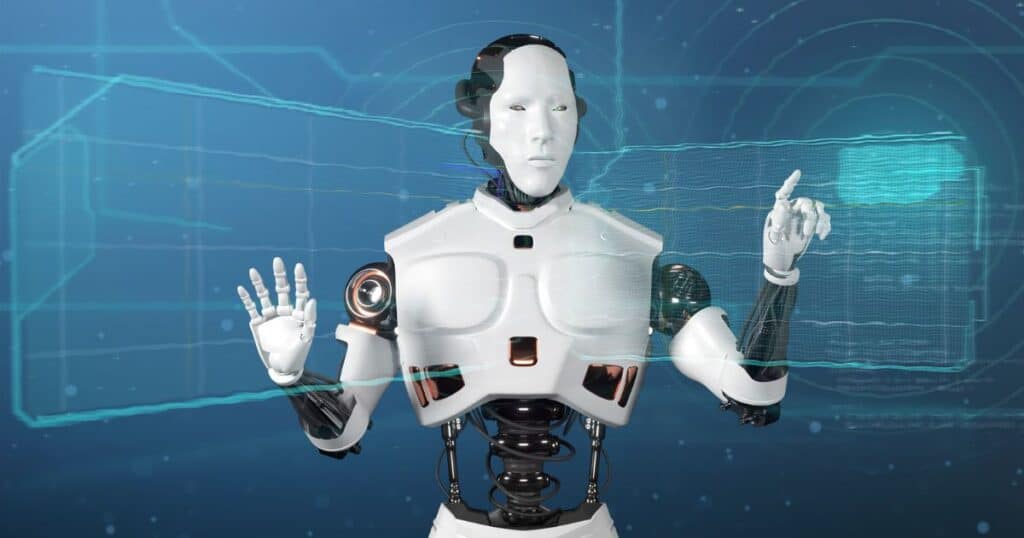
Also Read- https://askbylaw.com/Catagory/what-is-an-ai-law-a-1/
| FEATURES | JANITOR AI | OPEN AI |
| Legal Knowledge base | Legal awareness, accessibility and IP support | General-Purpose artificial intelligence and research with development |
| Legal Services | Legal research assistance and contract review guidance and IP registration support, Legal education modules. | Not exclusive design for legal Services need |
| Cost | Freemium model with basic features and paid plans for additional functionalities | Free version for limited futures and Pay-as-you go pricing based on usage |
| Data Security | Focus on data privacy and security | Adheres to general data security and practices |
| Targeted Audience | Individual, Small businesses, Eucational institutes and professionals | Researcher and developers, businesses for various application |
| Tailored for legal needs | Janitor Ai excels in providing legal information and resources. Its knowledge base is specifically designed for legal concepts, making it easier to navigate complex legal topic. | -OpenAI is a much broader AI Platform offering capabilities beyond the legal domain. it can be use various task like creative writing, code generation, and also scientific research. -OpenAI provide a wider range of advanced featured like text-to-code generation and large language models, appealing to developers and researchers. -OpenAi allows for more customisation in terms of model selection and programing application |

| Janitor AI | Open AI | |
| Data Privacy and Security | Data Collection and Use: Janitor AI collects user data for Service improvement, Personalisation, and analytics, Its important to review their privacy policy to understand what data is collected and how it use. User consent: They must ensure that users are informed and consent to data collection especially sensitive data in compliance with GDPR or CCPA if applicable. Data Security: The company can implement robust security measures to protect user data from branches and authorised access | Data Collection and Use: OpenAI collects user data to enhance its models and services. Their privacy policy outlines the types of data collection and its usage. User consent: OpenAI is committed to obtaining user consent for data collection, adhering to GDPR and other policy laws. Data Security: OpenAI employs advanced security protocols to safeguard user data, focusing on preventing data branches and unauthorised access. |
| Intellectual Property (IP) | User-Generated Content: Janitor Ai must clarify ownership rights over user-generated content and IP rights the company may claim. Third-party Content: Ensure that any third-party content used within the platform complies with licencing agreements and IP law. | Model Output: OpenAI’s policies address the ownership of content generated by its AI models, stating that users generally own the outputs they generate. Licencing: OpenAI adheres to strict licencing agreements for the use within the platform complies with licencing agreements and IP laws. |
| Liability and Compliance | Legal Liabilities: Janitor AI should outline the extent of its liability for errors, data loss, and misuse of the services in its terms of service. Regulatory compliances: Must comply with relevant regulations, sch as GDPR for data protection, and industry-specific laws if applicable. | Legal Liabilities: OpenAI provided detailed terms of service that limit its liability and specify the conditions under which the service is provided. Regulatory compliances: OpenAI adheres to global regulation including GDPR and CCPA. Ensuring compliance with data protection and privacy laws. |
| Ethical Considerations | AI Ethics: Janitor AI should implement ethical guidelines for AI use focusing on preventing bias, discrimination and misuse. Transparency: Ensure transparency in AI decision-Making processes and provide users with explanation of how the AI operates. | AI Ethics: OpenAi is committed to ethical AI development actively researching and addressing issues of bias, discrimination and misuse. Transparency: OpenAI promotes transparency in its operations and AI models providing extensive documentation and research findings to the public. |
| User Rights and Access | Right to access and delete data: Users should have the right to access their data and request to dilatation in accordance with privacy of law. Transparency: Clear communication about users rights and how to exercise them is crucial. | Right to access and delete data: OpenAI respects users rights to access and delete personal data providing clear procedures for such requests. Transparency: OpenAI ensures users are informed about their rights and the process to manage their rights |

Modern technologies are actively used in healthcare facilities in order to provide high hygiene standards and operational efficiency. Janitor AI, an artificial intelligence system for healthcare sanitation, represents the next generation of cleaning technology.
Machine learning algorithms allow assessing the level of cleanliness; making predictions about when equipment needs to be maintained or replaced, learn from the accumulated data, etc.
The Janitorial AI system ensures compliance with hygiene standards, as well as increases patient safety and satisfaction. Janitor AI is used by leading healthcare organizations and cleaning service providers.
The Janitorial AI solution allows you to confidently trust your patient and operational data to us Janitor AI clean-rooms without storing personal patient information and works with your infrastructure.
Thus providing operational efficiency and safety without violating HIPAA
Tomorrow's artificial intelligence will come fast. Janitor AI and OpenAI are paving the way, but in different ways. OpenAI continues to raise the bar with very practical models like GPT-4, versatile, deep and powerful for a wide spectrum of deep learning and applications.
Janitor AI, on the other hand, is your one-stop shop specializing in powerful yet practical and less expensive AI. A special one. Custom made. Industry requirements. Companies leveraging Janitor AI are looking for automation tools that fit their core activities and save time and money without the need to invest in more generic and expensive AI platforms.
Over time, the combination of both AI forces could prove very powerful at the enterprise level. On the one hand, high-level innovation with Open AI and on the other, applied innovation with Janitor AI that adds value through its practical models. A mutual benefit that raises the threshold of convenience and security of AI implementation. This should make digital transformation easier and more sustainable for any business anywhere.
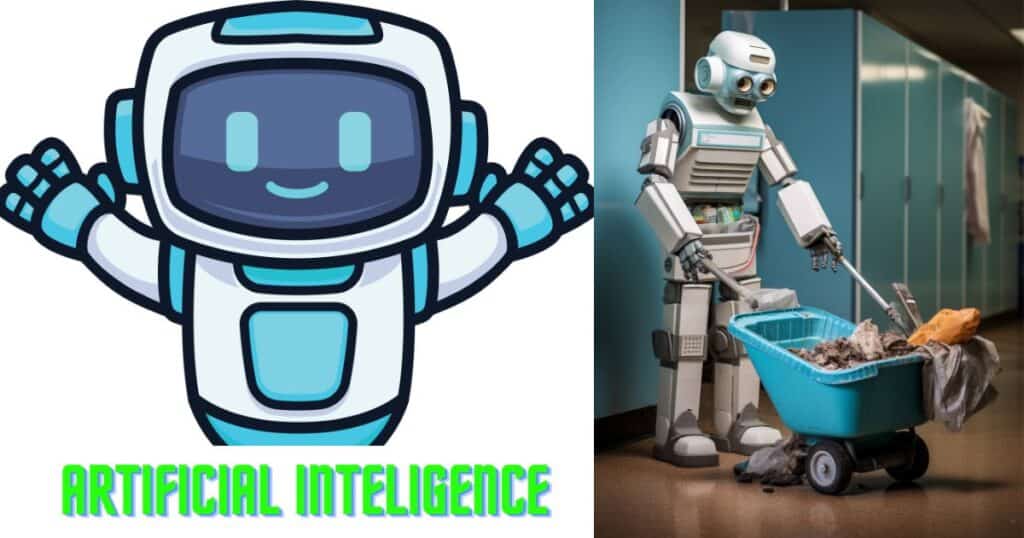
We discuss with you and go through final concusion at the topic "Janitor AI vs. Open AI" Today i discussed with you on the topic of (Janitor AI vs. Open AI) Janitor AI, a platform using Open AI LLM (Large Language Model) technology, automates janitorial tasks using its NLP (Natural Language Processing Expertise) on Reddit.
Despite potential bugs, the platform offers a free solution for exploring AI-generated content, despite occasional poetic or "horny" characters. See again. Open AI with its established presence offers a malleable experience with AI models like GPT-3.5. Its services are accessible through credits and a free $5 credit for new users, and it introduces "Janitor AI" for factual accuracy.
Remember. (Janitor AI vs. Open AI) offers a free option for AI enthusiasts seeking a nuanced experience, making it a solid choice for those seeking a more comprehensive Artificial Intelligence solution.
If you burning desire to have a detailed discussion on the legal issues of (Janitor AI vs. Open AI) then send us your comments in the comment box of this article and we will be happy to discuss with you, drop comment and update yourself today.
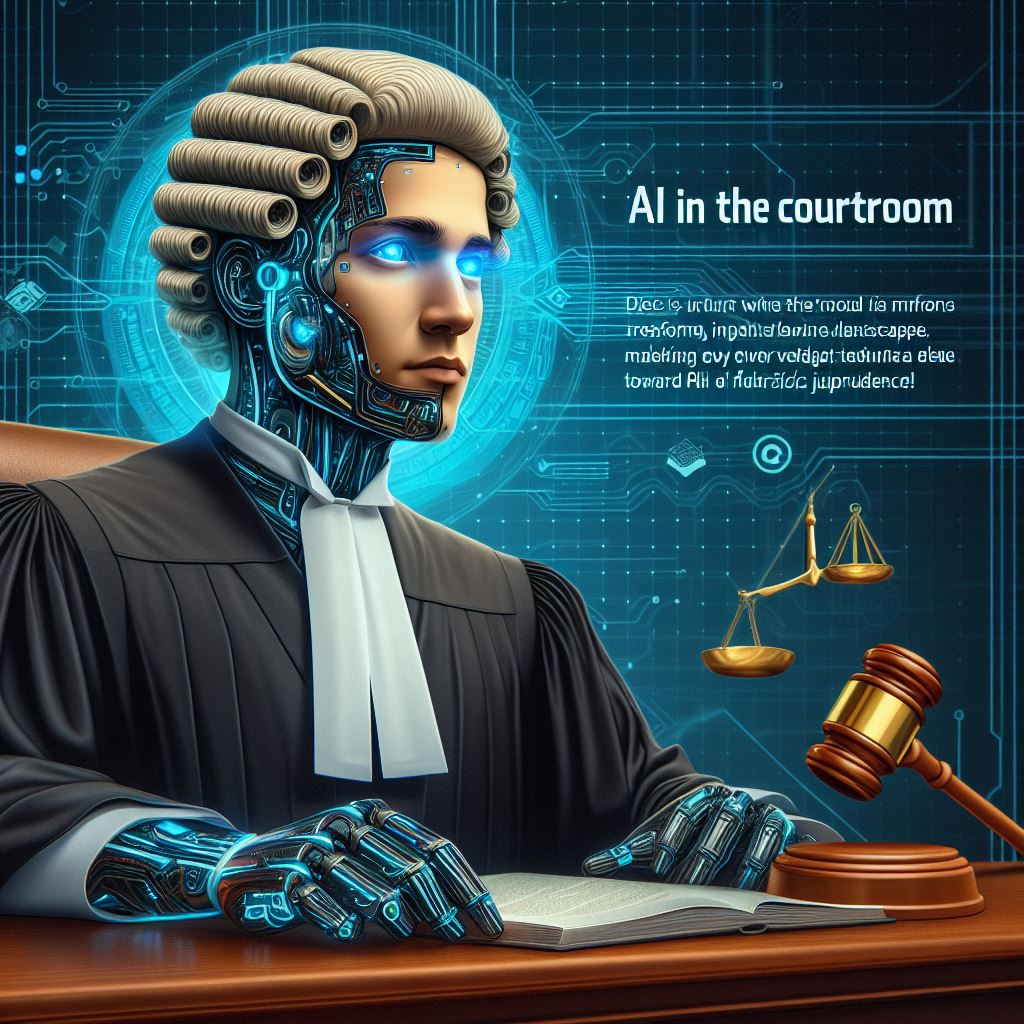
Welcome to the legal world. Today, this article explores the intersection of artificial intelligence (AI) and the legal landscape. Explore how AI impacts legal practice. From automating tasks to addressing complex legal questions, learn more about the innovation potential, and the challenges posed by generative artificial intelligence (AI). And the need for a legal framework to keep pace with technological advances. Dive into the evolving world of AI law and its implications for legal professionals and society.
For more in-depth insights, explore the article introducing AI law and its role in future legal practice.

Today's topic is very interesting. Artificial intelligence (AI) has surprised the entire world with surprising results showing the benefits of its use and the pitfalls of its limitations.
As a result, governments in every country have had to formulate policies and laws regarding artificial intelligence (AI). In the world, countries like the United Kingdom (UK), United States of America (US), Canada, China, India, Australia, Germany, Japan, Brazil, Italy, the European Union (EU), and France have taken the initiative to formulate and implement laws and policies on artificial intelligence (AI) by creating policies and laws for the citizens and governments of their countries.
Admirable work has been done by prioritizing the purpose and need to protect rights and digital existence, which is truly commendable.
As generative AI models (like large language models) proliferate, they raise complex legal questions. For instance:
In this dynamic landscape, AI’s potential for innovation and upheaval demands thoughtful consideration from legal experts and policymakers alike
A Case Study Approach:
This study investigates the ethical use of Big Data and Artificial Intelligence (AI) technologies (BD+AI) using an empirical approach
It presents a multi-case study of ‘on-the-ground’ ethical issues across various domains.
By analysing findings from ten targeted case studies, it identifies common ethical concerns and compares them with existing literature classifications.
AI is transforming legal practice by providing data-driven insights.
Explore how AI can help legal professionals make informed decisions regarding case outcomes.
Understand the intricacies, benefits, challenges, and prospects of AI-driven legal analysis
These case studies demonstrate the transformative power of AI in the legal field.
Learn how AI can enhance efficiency, provide smarter insights, and optimize legal processes.
This special issue delves into the ethical, legal, and socio-political aspects of AI and law
The article covers perspectives from philosophy, theology, law, medicine, and computer science.
Gain insights into current debates and implications related to AI in the legal domain
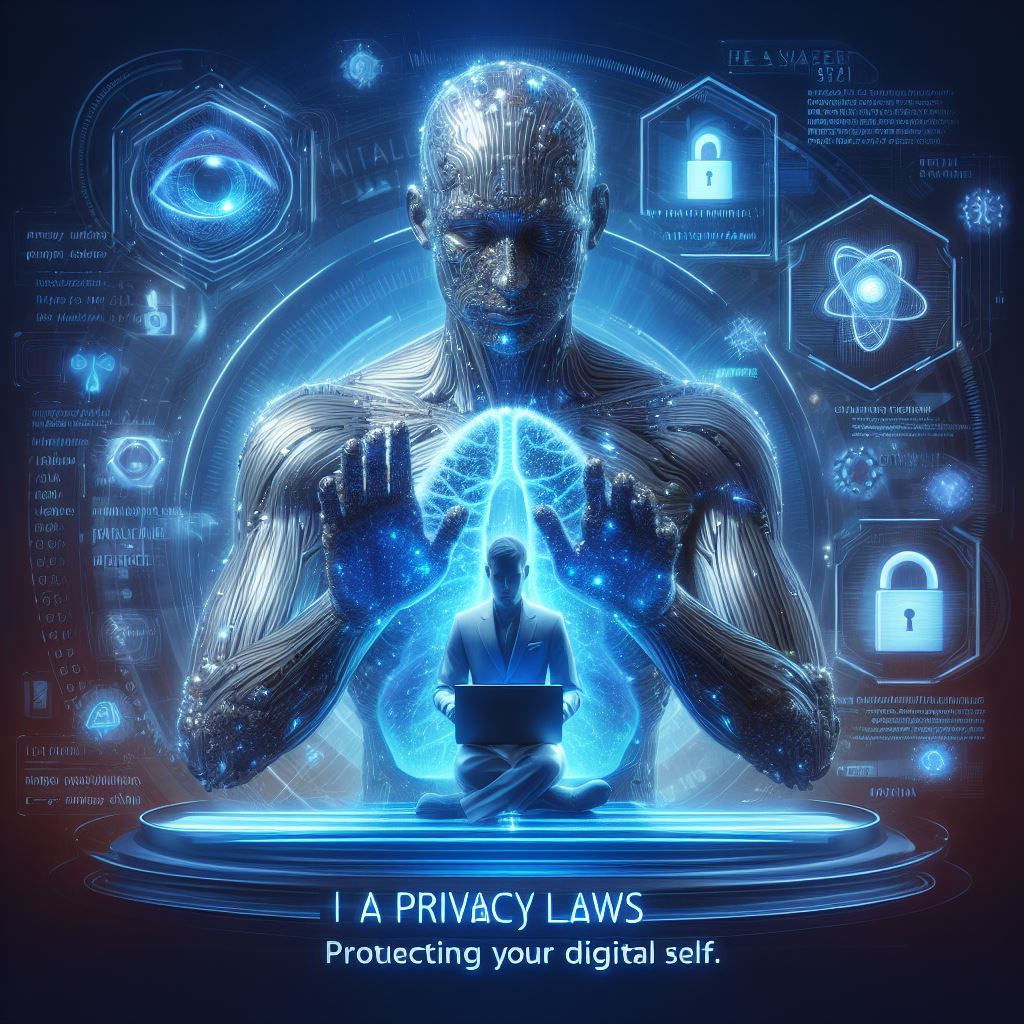
Generative AI (artificial intelligence), which includes large language models like ChatGPT is advancing rapidly. However, this progress brings forth complex legal issues.
Mark Lemley, a legal scholar, raises concerns about AI causing harm. For instance, if an artificial intelligence AI model provides advice on terrorism, recipes for dangerous substances, or disinformation that harms reputations or incites violence, who should be held accountable?
The company running the (artificial intelligence (AI) may not deliberately cause harm, but they might not predict the AI’s responses.
As artificial intelligence (AI) outpaces legal and regulatory frameworks, judges and lawmakers face novel questions:
How should the law address harmful speech generated by Artificial intelligence (AI)? Which lacks First Amendment rights?
AI’s impact extends beyond liability. It also transforms legal practice.
Researchers in the fields of AI & law develop computational models for legal reasoning and argumentation. These models enable new tools for legal professionals.
As AI continuously evolves, legal practitioners must grapple with its potential benefits and risks.
In summary, the marriage of AI and law presents exciting opportunities and daunting challenges. Legal systems must adapt swiftly to navigate this brave new world.
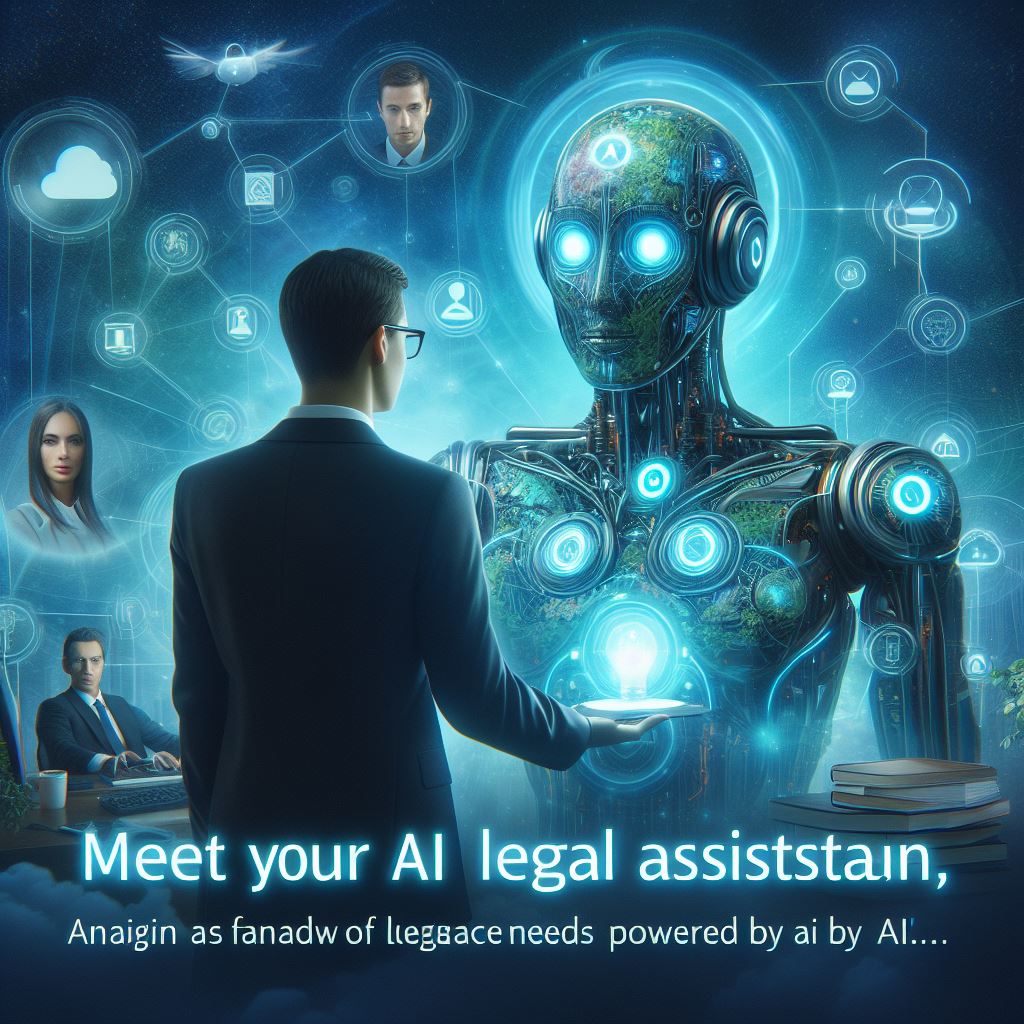
AI law is a critical field at the intersection of artificial intelligence (AI) and the legal domain. Let’s explore why it matters:
Judges and lawmakers face unprecedented issues:
Let’s explore some key areas within AI law:
Legal frameworks must adapt to address this novel challenge.
Greater exposure to AI is associated with higher employment in occupations when computer use is high. Workers with strong digital skills can adapt to and effectively use AI reaping its benefits.
Higher exposure to AI may lead to lower growth in average hours worked in occupations where computer use is low.
The adoption of AI could increase disparities between workers who can effectively use AI and those who cannot. Ensuring workers have the right skills for new technology is a key policy challenge.
When it comes to criminal liability, we must consider whether an AI system can satisfy the essential requirements:
This refers to the physical act or conduct that constitutes a crime. Can an AI system perform such acts?
The mental state or intent behind the act. Does an AI system possess intent?
Does the AI system have the cognitive abilities necessary for responsibility?
There are instances where an Artificial Intelligence system may engage in criminal actions without any human having planned or directed them. And, this raises questions about how the legal system should address this gap in criminal liability.
The future of AI Law is a captivating journey that intertwines technological advancements with legal frameworks. Let’s peer into what lies ahead:
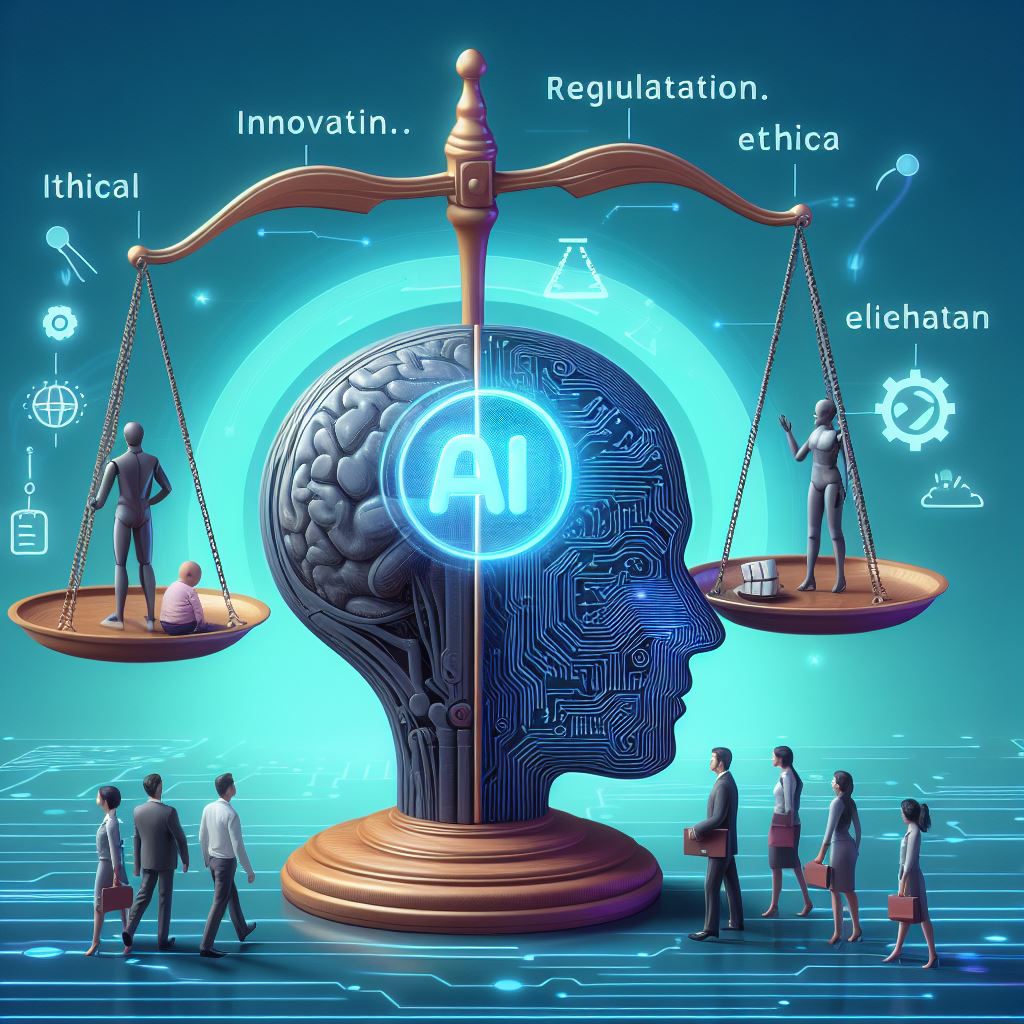
In the ever-evolving landscape of law and technology, the intersection of Artificial Intelligence (AI) and legal practice holds immense significance. As we conclude our exploration of AI law, several key takeaways emerge:
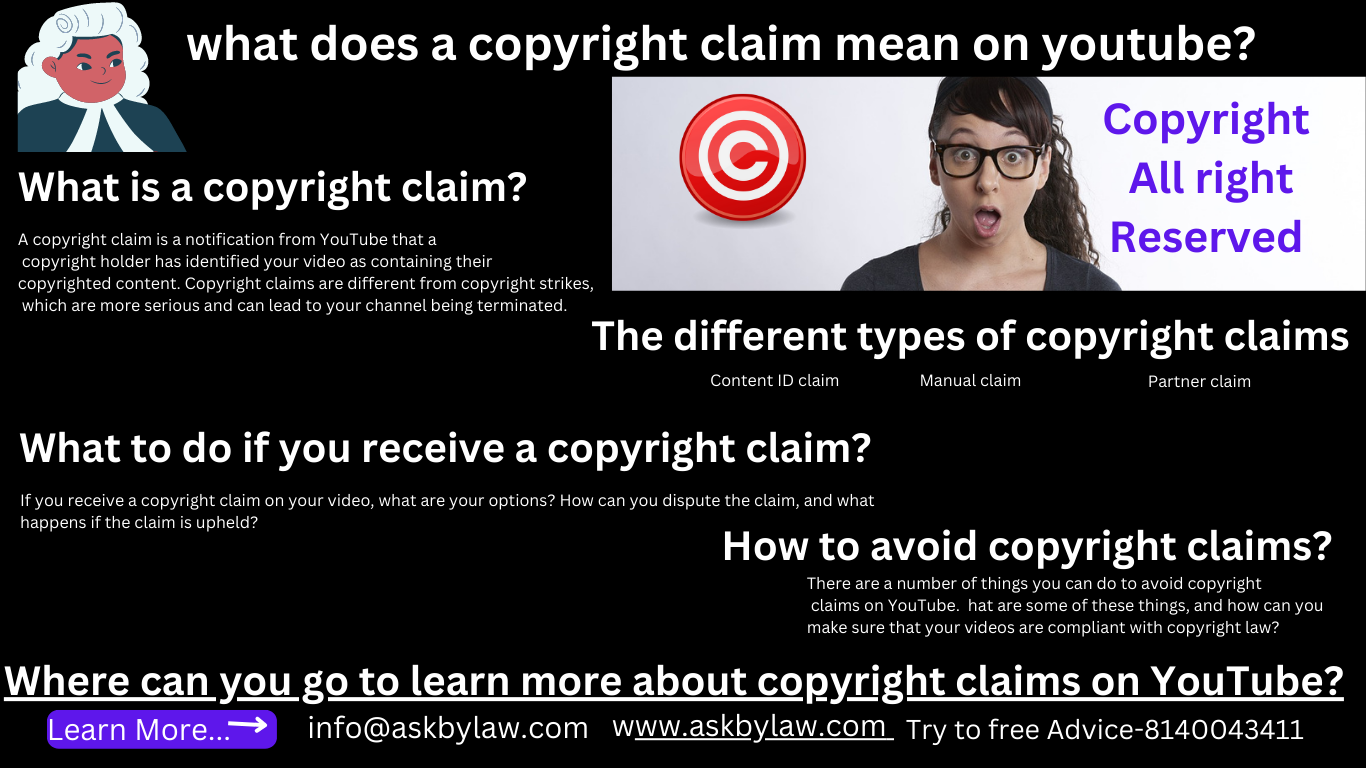
Basic summary of a copyright claim on youtube Have you uploaded some videoes to YouTube every day, only to find out that you have been sued by the copyright holder? If, the said has happened to you, know that you are not alone. And claiming copyright claims are a common occurrence on YouTube, and they…
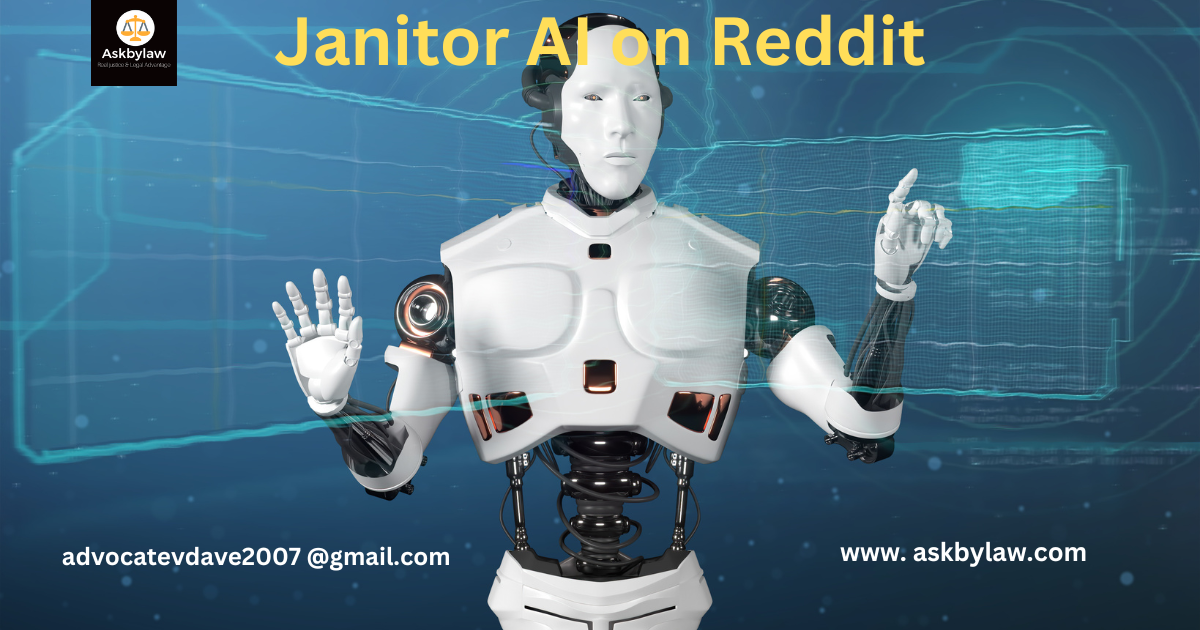
Discover the power of Janitor AI on Reddit Management 1. Introduction: Janitor AI on Reddit Today on this forum in the AI age we try to understand legal implications and other aspects with you on the topic "Janitor AI on Reddit". Although Janitor AI has started to be used on the Reddit platform so let's…
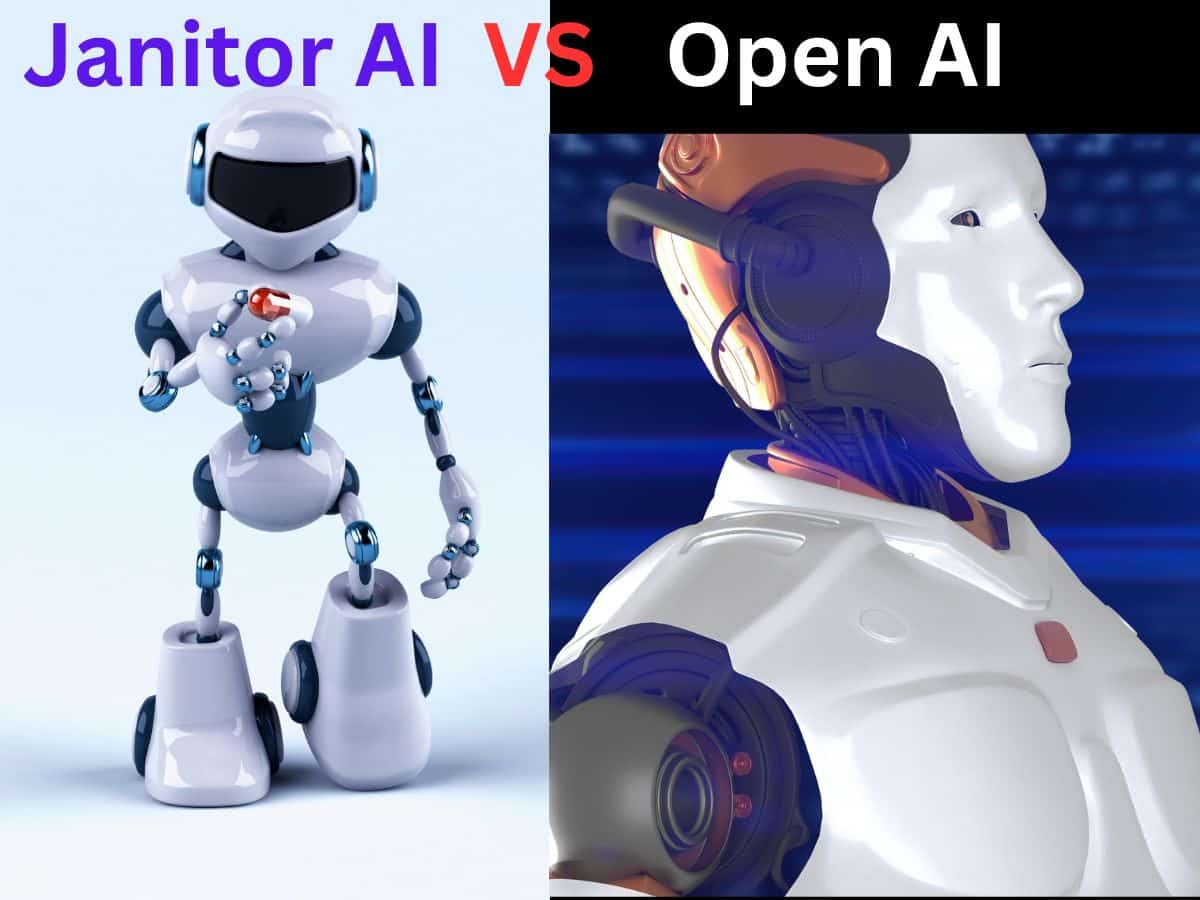
Legal insight: Janitor AI vs. Open AI 1. Introduction: Janitor AI vs. Open AI today I when thinking of the word AI, the concept of open AI versus revolutionary generative AI comes to mind. ChatGPT is also a much talked about concept in the world of AI. Janitor AI and Open AI are popular inventions…

AI trade secrets are a hotly debated topic and can also be called a solution to an emerging need. By checking the SWOT analysis and cost-benefit ratio of AI, it can be known that, shortly, we will understand the performance, future, uses, and limitations of this artificial intelligence (AI) and its commercial use in business.…
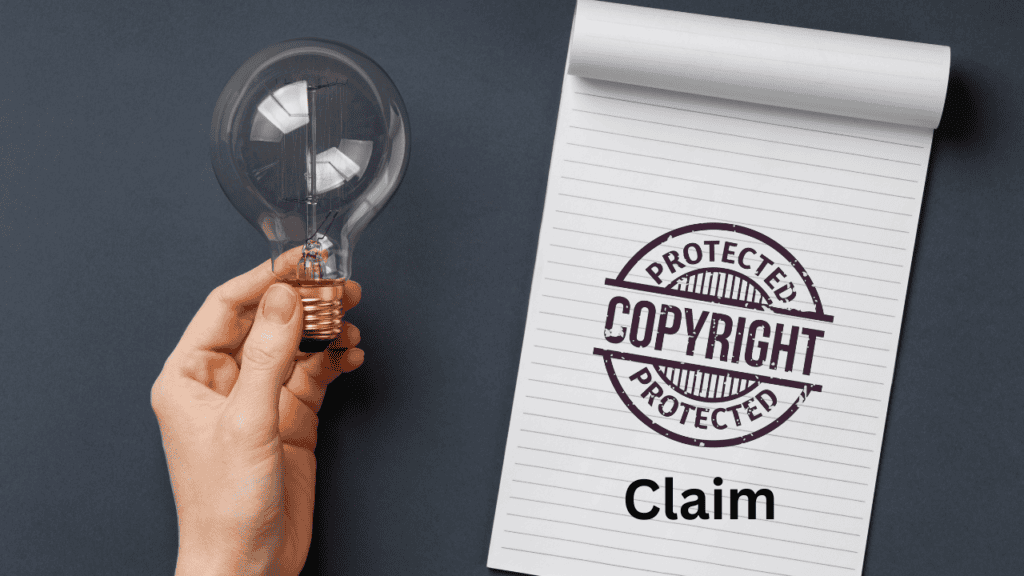
Creating digital property and creating income enjoyment is an imperative thought and careful endeavor, including false copyright claims on YouTube. When an original creator is accused of a false copyright claim, the genuine content creator can protect their original content creation if they seek to obtain, a strong cover of the law to protect their original creation. Often, due to misconceptions about the law and the negative experiences of well-wishers, the original creator neglects the protection of the law. As a result, he cannot properly defend his original content creation due to imaginary bias. This has led to a huge surge in fraudulently false copyright medicines, which raises many questions, and tensions about creation and reward.
Our article will help you find the motive behind a false copyright claim and inspire you to protect your original content creation in the world of intellectual property and be stress-free by making the creator aware and getting legal protection. To read

When a person self-identifies content or intellectual property created by fraudulent means, another person claims to have created the content. A false copyright claim makes such a claim and opposes and claims to deprive the creator of the original content or intellectual property from its use. Such claims are mostly found in video content. To read
Your initial reaction might be to assume that all claims are false, but that's not the case. Some claims are legitimate and made for various reasons.
There are cases where copyright claims are genuinely false. Here are three common scenarios:
Getting false copyright claim on YouTube videos can indeed be frustrating, especially when they are false. However, it’s essential to recognize that not every claim is illegitimate. Let’s explore how you can identify false claims and strategies for dealing with them:
If you use a song by your favorite artist in your video, and YouTube detects it. You’ll receive a copyright claim. This isn’t necessarily false; it means YouTube’s Content ID system detected copyrighted music, and ads may appear in your video in exchange for using the music.
Even if you purchased a license from a royalty-free music library, you might still receive a claim, in most cases. This is a valid claim, as stock music composers protect their work from unlicensed use.
There are cases when claims are genuinely false. Here are some typical scenarios:
YouTube’s Content ID system relies on a vast database of reference music tracks submitted by copyright owners. Unfortunately, some references aren’t legitimate. These include:
Some individuals maliciously attempt to remove content from YouTube by falsely asserting copyright ownership. YouTube reviews such requests to ensure they’re not abusive.
YouTube reported nearly 2.2 million false copyright claims in six months, with many videos later reinstated after determining the claims were incorrect.
If your video receives a Content ID claim, dispute it if you have valid reasons (e.g., you have all necessary rights to the content).
Use relevant evidence, such as license certificates, to support your case.
Persistence is necessary to resolve false claims. Keep communicating with YouTube and provide clear explanations.
Disputing a false copyright claim on YouTube involves several steps. Here’s a guide to help you navigate the process:
Location of the video that received the copyright claim. Visit your YouTube studio and find the video in question.
Click on the video to view the claim details. Understand which part of your video triggered the claim (e.g., specific music, visuals, or other content).
If your video falls under fair use, you can dispute the claim. Fair use includes commentary, criticism, education, and transformative content.
If you have the necessary licenses or permissions for the content, dispute the claim.
If the content is in the public domain it cannot be claimed.
Sometimes, claims are made in error due to similarities. Explain why your content is distinct.
If you used Creative Commons-licensed material correctly, dispute the claim.
Parodies and satirical content are protected under fair use.
If you believe the claimant is mistaken, you can file a counter-notification.
If your video doesn’t infringe any copyright, dispute the claim.
If you purchased music or visuals legally
Explain how your video qualifies as fair use.
if applicable
Show where your content differs from the claimed material.
Removing a copyright claim on YouTube can be a bit tricky, but I’ll guide you through the process. Here are the steps you can take:
When you upload a video to YouTube, the platform now automatically checks for copyrighted material. Before hitting the publish button, YouTube will inspect your content and notify you if any copyrighted material is detected.
You’ll see this in the Checks section during the upload process. It’s a game-changer because it lets you know about copyright matches before your video goes live.
You can then decide on the best course of action, whether it’s disputing the claim or taking steps to remove it.
On the same upload page, expand the details of the copyright claim by clicking “See Details,”
If you decide to move forward and upload the video, you have options:
Definitely, yes, a copyright claim on your YouTube video can indeed affect your views and monetization. Here’s how:
YouTube is less likely to recommend videos with copyrighted material. If your video contains copyrighted content, it might receive fewer views due to this recommendation algorithm. Additionally, some viewers might avoid videos with copyright claims.
If your channel isn’t monetized yet, you need to reach 1,000 subscribers and accumulate 4,000 total watch hours to qualify. However, copyrighted videos don’t count toward these watch hours. So, if your videos are copyright-claimed, they won’t contribute to meeting the threshold for monetization.
The copyright owner may restrict your video from appearing in certain regions or even block it entirely.
YouTube’s algorithm considers copyright claims when recommending videos. If your video has a claim, it might not be suggested as frequently.
When it comes to adding music to your videos without running into copyright issues, there are several alternatives you can explore:
Lickd offers access to a vast catalog of mainstream music from well-known artists. You can license popular tracks for your videos, and they’ll take care of any copyright claims for you.
Snapmuse provides royalty-free music that you can use in your YouTube videos. It’s a great resource for finding music without worrying about copyright restrictions.
Look for music released under Creative Commons licenses. These licenses allow creators to use the music for free, as long as they follow specific terms (like giving credit to the artist).
Public domain music is not protected by copyright and is free to use. You can find classical compositions, traditional folk songs, and other works that have entered the public domain.
Create your own music! If you’re musically inclined, compose original tunes for your videos. This ensures complete ownership and avoids any copyright issues.
Creating your own original music can be a rewarding and fulfilling experience. Here are some tips to get you started:
Listen to a wide variety of music across different genres. Pay attention to melodies, harmonies, rhythms, and instrumentation. Inspiration can strike from unexpected places.
If you don’t already play an instrument, consider learning one. Whether it’s the guitar, piano, or even electronic music production software, having an instrument at your disposal opens up creative possibilities.
Start by playing simple chords and experimenting with different progressions. Try major, minor, and seventh chords. Combine them to create unique sequences.
Melodies are the heart of any song. Hum or play around with notes until you find a catchy tune. Use scales as a foundation and explore different intervals.
If you’re interested in writing lyrics, jot down your thoughts, emotions, and experiences. Lyrics can add depth and meaning to your music.
Invest in recording equipment or use digital audio workstations (DAWs) like Ableton Live, FL Studio, or Logic Pro. Learn how to record, edit, and mix your tracks.
Explore synthesizers and sound libraries. Create unique sounds by tweaking parameters like filters, oscillators, and effects.
Collaborating with other musicians can lead to fresh ideas. Work with vocalists, instrumentalists, or producers to enhance your music.
Share your work with friends, family, or online communities. Constructive feedback helps you improve. Don’t be afraid to iterate and refine your compositions.
Music creation is a journey. Be patient with yourself, and stay curious. Learn from both successes and failures.
Promoting your original music online is crucial for gaining visibility and growing your fan base. Here are eight effective steps to help you get started:
Establish a professional online presence by creating a dedicated music website. Use platforms like WordPress/ Wix to build a site where fans can learn more about you, listen to your music, and find links to your social media profiles.
Distribute your music on popular streaming platforms like Spotify, Apple Music, and Amazon Music. Samsung Music. These services allow you to reach a global audience and monetize your streams.
Leverage social media platforms such as Instagram, Facebook, Twitter, Tik-Tok, etc., . Share behind-the-scenes content, teasers, and engage with your audience. Consistency is key.
Compile a professional press kit that includes your bio, high-quality photos, music samples, and any notable achievements. This makes it easier for journalists, bloggers, and promoters to feature your music.
Reach out to music blogs and websites that align with your genre. Submit your music for reviews, interviews, or features. Positive coverage can introduce your music to new audiences.
Visual content is powerful. Create music videos for your songs and share them on YouTube and social media. Engage viewers with captivating visuals that complement your music.
Collaborate with fellow musicians, producers, or influencers. Joint projects can expand your reach and introduce your music to their followers.
Perform live whenever possible. Whether it’s virtual concerts or local gigs, live shows create a direct connection with fans. Promote your shows through social media, flyers, and local event listings.
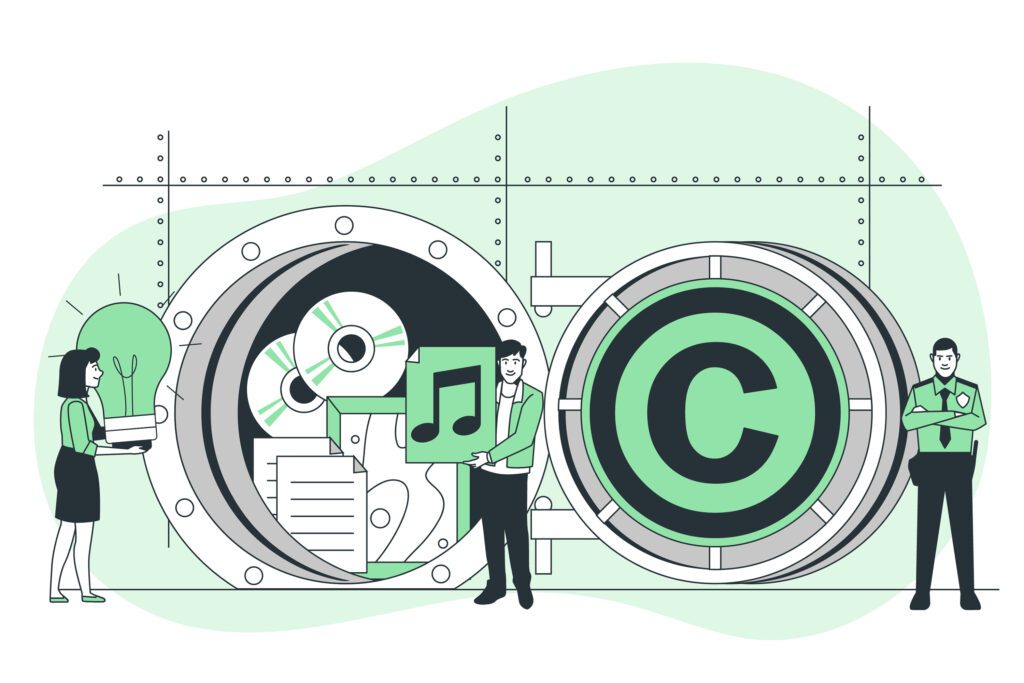
Judges evaluate fair use based on these factors:
The Purpose and Character of the Use: Is it for nonprofit educational purposes, commentary, criticism, research, or news reporting?
The Nature of the Copyrighted Work: Some works (e.g., factual or published) are more likely to be considered fair use.
The amount and substantiality of the portion used: Using a small portion is more likely to be fair use.
Effect on the market: If the use doesn’t harm the market for the original work, it’s more likely to be fair use.
Fair Use:
Definition: Fair use is a limitation and exception to the exclusive rights granted by copyright law to the author of a creative work.
Purpose and Character of Use:
Fair use involves unauthorized use that does not violate the copyright holder’s rights.
It is often transformative, adding new expression or meaning to the original material.
Commercial use can still qualify as fair use under certain circumstances.
Nature of the Copyrighted Work:
Fair use considers whether the use is outweighed by the public interest in its free dissemination.
It applies to various purposes like criticism, commentary, research, and news reporting.
Amount and Substantiality of Portion Used:
Fair use involves using a portion that is not substantial enough to appropriate the “heart” of the original work.
Effect on Market Value of Work:
Fair use does not harm the market or potential market for the original work.
Legal Basis: Section 107 of the U.S. Copyright Act outlines fair use criteria.
Copyright Infringement:
Definition: Infringement occurs when someone unauthorizedly uses a copyrighted work, violating the exclusive rights granted by copyright law.
Purpose and Character of Use:
Infringement does not further the purpose of copyright; it directly violates the holder’s rights.
Nature of the Copyrighted Work:
Infringement can appropriate the “heart” of the original work.
Amount and Substantiality of Portion Used:
Infringement involves using a portion substantial enough to harm the market for the original work.
Effect on Market Value of Work:
Infringement harms the market or potential market for the original work.
Legal Basis: Section 106 of the U.S. Copyright Act grants exclusive rights to creators.
Balancing Act:
Courts analyze fair use on a case-by-case basis, considering the four factors explicitly listed in section 107:
Purpose and character of the use
Nature of the copyrighted work
Amount and substantiality of the portion used
Effect on the market value of the work
Community Guidelines Strikes:
YouTube issues strike when your content violates the Community Guidelines.
Here’s how the system works:
First Strike: You receive a warning, but no immediate penalty.
Second Strike: Within a 90-day period, you face a two-week upload freeze (you can’t upload new content).
Third Strike: Another strike within the same 90-day period results in channel termination.
Copyright Strikes:
Copyright strikes occur when someone claims your content infringes their copyright.
If you receive multiple copyright strikes, your channel may be terminated.
You can file a counter notification if you believe the claims are incorrect.
Transparency and Appeals:
YouTube aims to be transparent about strikes, explaining why they occurred.
If you think a strike was a mistake, you can appeal it using the provided form.
Remember not to submit multiple appeal requests, as it can cause delays.
Today's article discusses the topic of false copyright claims on YouTube. I hope you find it useful.
Countering fraudulent copyright claims may seem difficult at first sight, but being well-informed and proactively confronting original content creators can save original content creators from undue interference with economic and social loss.
For original content creators considering false copyright claims as a potential strategy, it is important to understand that the legal and ethical consequences often outweigh any temporary and unfair benefits.
In today's environment where creativity is the pulse of digital content, adherence to proper copyright practices is an increasingly critical and imperative requirement. It is our culture to allow original art to flourish and protect it from obstruction. And every original content creator deserves their fair share of rewards.
Holders of false copyright claims do more than simply steal content. They create the illusion of being the original creator by stopping the flow of creativity, which violates the ethical lines of digital citizenship, which is why protecting original creativity is a constitutional right. A right of creation every original artist should get.
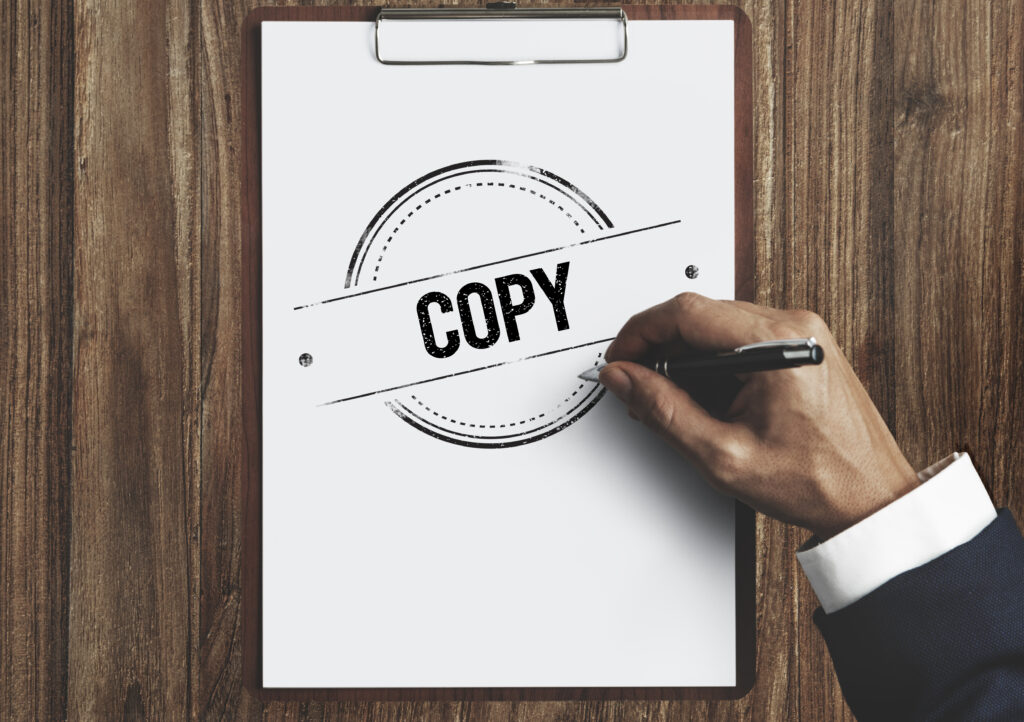
What are DMCA takedowns? In the vast expanse of digital content where pixels meet passion lies a battleground: the DMCA takedown process on YouTube. Picture this: your latest video, painstakingly crafted, dances across screens and gathers views like fireflies on a summer night. But what if someone else pirouettes with your creation? Fear not, for the Digital Millennium Copyright Act (DMCA) steps onto the stage. It’s both a sword and a shield a mechanism to protect your intellectual property and a compass for creators.
What are DMCA takedowns? Nota bane: that DMCA notice on YouTube counts as one strike against your entire account. If you receive three strikes within a 90-day continuing period, your videos and channel may be permanently removed. Make sure to follow the process diligently to protect your copyrighted content.
When infringing content pirouettes on your turf, the DMCA waltzes in. Here’s the choreography: notice-and-takedown. The copyright owner, like a vigilant conductor, raises their baton. YouTube's Grand Theater awaits a valid DMCA notice is elegantly composed, and triggers action. The curtain falls, and the content vanishes.
Creators, listen to you first closely! As legal guardians of your artistry, we wield our quills and gavels. If you find your work pirated, fear not. Knowledge is your armor. Whether you’re a seasoned YouTuber or a fledgling filmmaker, we’re here.
Should the DMCA tempest brew our legal ship sails? Consult us. We’ll decipher the Act’s cryptic verses, draft your notices, and steer you through the storm. Protect your pixels. Preserve your passion.
Are you ready to reclaim your creative seas? Consult with us now, and let’s hoist the anchor!
If your copyright-protected work was posted on YouTube without your authorization, you can submit a copyright removal request to request that the content be removed. Here’s how you can go about it:
To view the copyright removal requests you’ve previously submitted to YouTube:
The Digital Millennium Copyright Act (DMCA) is a United States copyright law that addresses issues related to digital content, intellectual property, and online infringement. Here are some key points about the DMCA:
The DMCA offers a safe harbor provision for online service providers (such as websites, social media platforms, and hosting services). These providers are shielded from liability for copyright infringement committed by their users, as long as they promptly respond to takedown requests.
Copyright owners can submit a DMCA takedown notice to request the removal of infringing content from online platforms. The platform must then take down the content promptly.
If a user believes their content was wrongfully taken down, they can submit a counter-notification to challenge the takedown. The platform may restore the content if the user complies with certain requirements.
The DMCA prohibits the circumvention of digital rights management (DRM) technologies used to protect copyrighted works.
A takedown notice is a formal request made by a copyright holder, or their authorized representative to remove infringing content from an online platform. Here are the key points about takedown notices:
Ignoring a takedown notice can have legal and practical consequences. Here are some potential outcomes:
If you ignore a valid takedown notice, the copyright owner may choose to file a lawsuit against you for copyright infringement.
If the court rules in favor of the copyright owner, you could be liable for damages, Which may include monetary compensation.
Continued infringement may result in the permanent removal of your content or even your entire account from the platform.
If you’ve received a DMCA takedown notice on YouTube and believe the claim is incorrect, you can file a DMCA counter-notice to dispute it. Here’s how you can go about it:
Of course Yes. The duration for resolving a DMCA takedown notice can vary based on several factors. Here are some key points to consider:
If the copyright owner responds to your DMCA counter-notice, there are a few possible outcomes:
The Fair use of YouTube is a legal doctrine that allows the use of copyright-protected material under specific circumstances without requiring permission from the copyright holder. Here are the key points about fair use:
Judges evaluate fair use based on these factors:
1.The nature of the copyrighted work: Some works (e.g., factual or published) are more likely to be considered fair use.
2. The nature of the copyrighted work: Some works (e.g., factual or published) are more likely to be considered fair use.
3. Amount and substantiality of the portion used: Using a small portion is more likely to be fair use.
4. Effect on the market: If the use doesn’t harm the market for the original work, it’s more likely to be fair use.
Fair use rules differ across countries and regions:
United States: Works of commentary, criticism, research, teaching, or news reporting may qualify as fair use.
European Union (EU): More limited exceptions exist, such as quotation, criticism, review, caricature, parody, and pastiche.
Other countries may have a concept called “fair dealing” with different criteria
Before uploading videos that use copyright-protected material, it’s advisable to seek legal advice from an expert.

Qoestion. What are DMCA takedowns? Answer. Looking at the intricate dance of digital rights and creative expression, the DMCA takedown process on YouTube emerges as a pivotal player. As content creators; we wield our cameras and keyboards to craft narratives that ripple across screens worldwide. Yet, within this virtual tapestry, copyright battles rage in a symphony of cease-and-desist letters, strikes, and appeals.
The DMCA, with its notice-and-takedown choreography, seeks to harmonize these discordant notes. But it’s not just legalese; it’s a call to action. Creators, with the help of AskByLaw, safeguard your creation and video. Educate your audience. Respect the rights of fellow artists. Let us navigate this labyrinth together, guided by the compass of fairness and the shield of DMCA knowledge, as per our article.
If you find yourself entangled in the DMCA web? Our legal team stands ready. Reach out for a consultation, and let us weave a strategy that protects your creativity and rights. Login Here
#DMCA Takedown Notice
#Copyright Infringement
#Copyright Infringement
#Digital Millennium Copyright Act (DMCA)
#DMCA Compliance:
#Infringing Content
Basic summary of a copyright claim on youtube Have you uploaded some videoes to YouTube every day, only to find out that you have been sued by the copyright holder? If, the said has happened to you, know that you are not alone. And claiming copyright claims are a common occurrence on YouTube, and they…
Discover the power of Janitor AI on Reddit Management 1. Introduction: Janitor AI on Reddit Today on this forum in the AI age we try to understand legal implications and other aspects with you on the topic "Janitor AI on Reddit". Although Janitor AI has started to be used on the Reddit platform so let's…
Legal insight: Janitor AI vs. Open AI 1. Introduction: Janitor AI vs. Open AI today I when thinking of the word AI, the concept of open AI versus revolutionary generative AI comes to mind. ChatGPT is also a much talked about concept in the world of AI. Janitor AI and Open AI are popular inventions…
AI trade secrets are a hotly debated topic and can also be called a solution to an emerging need. By checking the SWOT analysis and cost-benefit ratio of AI, it can be known that, shortly, we will understand the performance, future, uses, and limitations of this artificial intelligence (AI) and its commercial use in business.…
DMCA Takedowns on YouTube. YouTube is a major platform for uploading and sharing video content. YouTube gives its users the freedom to upload, like, and share videos.
YouTube has become a very popular website (platform) in the world. All kinds of people like comedians, teachers, vloggers, lawyers, Engineers, food recipe makers musicians, Companies etc. Create and upload their video content on YouTube.
It has become a common and easy thing to share copyrighted uploaded content on YouTube by a creative YouTuber. Due to this, the amount of copyright infringement has started to increase very alarmingly; this matter is capable of harming creative YouTubers.
DMCA Takedown gives such creative YouTubers the right to request their unauthorized content to be removed, allowing YouTube to remove copyright-infringing content from its platform and providing protection to creative YouTubers.
Have you felt the feeling that some user without your prior approval or permission has made the video you made and uploaded it on YouTube to get views and likes? If this has happened to you, this article is for you. In this article, I am going to show you a legal process through which you can easily remove copyright-infringing content from YouTube.
Have you heard the term DMCA Takedowns on YouTube? Yes, this term gives you ample protection against non-creative and unauthorized use of your original video content by others. What is a DMCA Takedowns on YouTube, Who Can File a DMCA Takedowns on YouTube? I'm here to discuss in detail what you should do if you receive a DMCA Takedowns on YouTube to protect your copyright on YouTube.
You put a lot of effort into creating your creative video and you find out that your hard-earned video content has been stolen and the person who stole your content has profited from it. You are tired of thinking about how to recover your original content, and videos from the person who stole your content.
And you are not sure how to proceed against them so if you are feeling more insecure than trust that I will give you sound legal advice and help you to protect your intellectual property. Read more about solving your problem.
" Any lawyer without law books would be like a labor without tools"
Tomas Jefferson
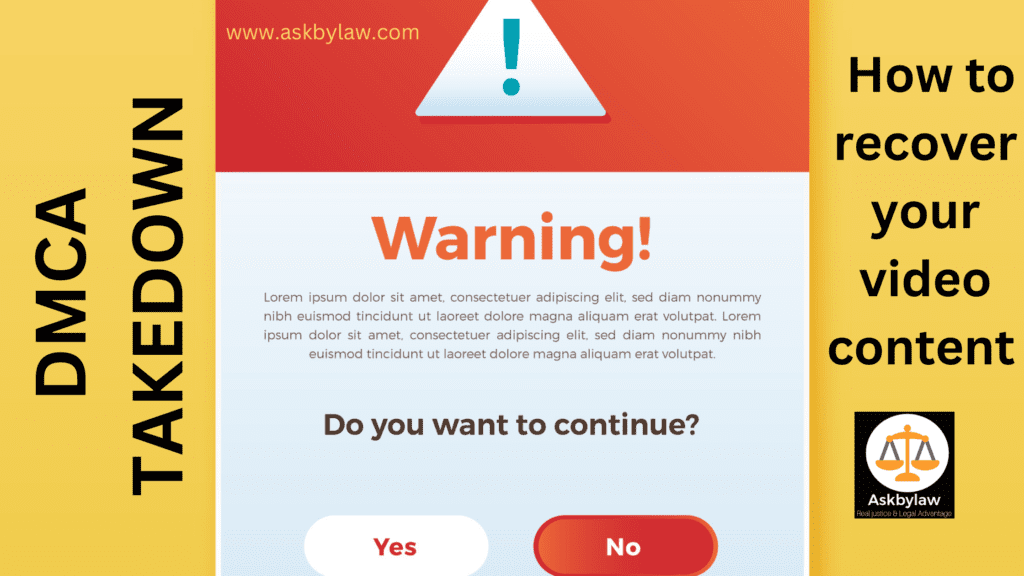
As an expert legal advisor with detailed knowledge of copyright and the ability to develop a fully legal-based YouTube content plan. I will definitely provide you with a structured outline to develop well described videos on "DMCA Takedown on YouTube" with legal protection.
This article will contain a legal framework of reliable information from high-level legal experience/expertise aimed at effectively educating readers and users.
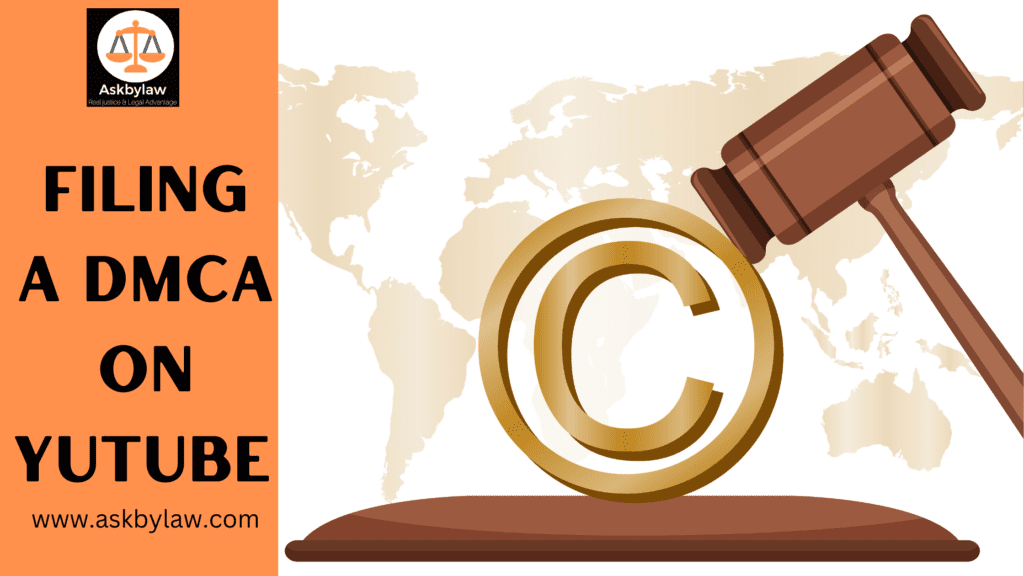
The Digital Millennium Copyright Act is a law of the United States of America. This Act is designed to implement the World Intellectual Property Organization's Copyright Treaty and Phonogram Treaties, which protect the production and dissemination of technology devices or services thereof.
This law is primarily designed to curb copyright infringement. This law is intended to protect the original copyright holder against injustice caused by unauthorized access to copyrighted works protected by law. An important issue in today's digital age is that the task of managing and protecting copyrighted content created by YouTubers themselves has become tedious and stressful.
The Digital Millennium Copyright Act addresses copyright concerns for creative YouTubers. The main purpose of the Digital Millennium Copyright Act is to prevent the unauthorized sharing and dissemination of creative YouTubers' creative content and rights on reputable platforms.
In 1998, the US Congress passed the Digital Millennium Copyright Act with the main and primary objectives of (1) establishing protections for online business or service providers in certain circumstances (2) providing incentives and protection to copyright owners against unauthorized access to their digital works in digital formats; (3) making it illegal to provide false copyright management information and/or to remove and/or alter such information under certain circumstances;
Section 512 of the DMCA, which deals with copyright, includes provisions regarding notices and counter-notices of copyright infringement.
When an owner voluntarily creates and displays digital works, without the permission of the original creative owner who created the work, a DMCA takedown is processed under the Digital Millennium Copyright Act for infringing the act of unauthorized access to the copyright and digital works created by the original owner.
Protection, which requires the creator of the original work that has been infringed upon, has to be invoked. A DMCA takedown is a legal means of early resolution of copyright infringement problems of online businesses or service providers.
The DMCA is a copyright infringement law of the United States of America. This law provides a remedy to the creator of copyrighted material to immediately remove copyright-infringing material from websites or other platforms without going to court.

The provisions of the DMCA provide necessary and essential protections to the original creator of copyright. This can be understood as follows.
Provide legal protection and security to owners or individuals to any person or company trade products or services through various online platforms such as a website or social media.
This provision is known as a self-harbor in the DMCA Act. This self-harbor provision protects against direct liability arising from copyright infringement and also encourages the development of user-generated digital content.
This system consists of an address system for immediate removal of all copyright-infringing content upon receipt of a DMCA notice based on the demand of a copyright holder providing an online business or service.
Protection against Fraud: This mechanism includes an effective management mechanism i.e. DRM (Digital Rights Management) to protect copyrighted content through the DMCA to prevent copyright infringement and prevent illegal use. And the main task is to prevent manufacturers from tampering with their content and preventing piracy.
The main purpose of the DMCA is to protect content creators' rights and freedom of expression. The provisions of the DMCA give importance to the intellectual property rights of creators and ensure that creators of content can do so online without any threat.
DMCA has created strict policies from YouTube in line with takedowns and has also implemented a system of Content IDs to address copyright issues. YouTube's policies prohibit the uploading of their copyrighted content by others without the permission of the original copyright owner. YouTube may track or block the copyright holder's content from being played further.
By developing the Content ID system, YouTube allows music labels and movie studio owners to upload content copyrighted by the original owners to its database, and then the Content ID system scans it. And YouTube often overlaps with other content. YouTube allows its original owner to advertise and monetize content.
Sometimes when a copyright holder notifies YouTube about copyrighted content uploaded by another user stating that the uploaded content falls under the definition of fair use.
YouTube will conduct a legal review of the notice they received, and this review proves that the uploaded copyrighted content does not fall under fair use. Any notice sent by the copyright holder will be treated as a false notice by YouTube and further processed. YouTube may also penalize the copyright holder for giving false notices.
Due to the penalty imposed by YouTube, the copyright holder who sent the false DMCA notice may be forced to appear in the court office, and reduceor lost the reputation of the person who gave the false notice may be seriously damaged and there may be circumstances of suffering financial loss. Statistical data for DMCA takedowns on YouTube
When YouTube receives a written notice regarding a DMCA from a copyright holder or their authorized legal representative, is YouTube sending that notice in compliance with the law? Reviews it. If the notice is found to be in compliance with DMCA rules, YouTube will immediately remove the infringing content in accordance with the provisions of the Digital Millennium Copyright Act and notify the user who uploaded the copyrighted content accordingly.
YouTube gives the option to provide a counter-notice to the user uploading the copyrighted content if the user of the revoked content is making fair use of the copyrighted content. If a user who makes fair use of copyrighted content gives a counter-notice to YouTube, the original copyright holder is notified by YouTube. If a user who makes fair use of copyrighted content does not provide a counter-notice to YouTube, YouTube will assume that the uploaded content is found to be infringing under the DMCA.
Following is the structure of this article based on the following citations for a detailed explanation of today's topic:
A fundamental principle of copyright law is the principle that the original copyright holder may grant limited or conditional permission to upload and monetize the content created by the original copyright holder for the user by obtaining the permission of the copyright holder to upload content created by him to his channel and paying royalties.
The fair use principle prohibits content creators from uploading their content to other users, commenting on it, criticizing it, producing news or reporting, publishing news or reports, educational and parody, or remixing the use of copyrighted content for other users with limited or conditional permission. Copyright given by creator, Fair use of copyrighted content is required under the DMCA to promote free speech, creativity, and sharing of ideas while using creator's copyrighted content.
Steps to avoid DMCA takedown action for other users to legally use the copyright holder's content include:

DMCA plays a crucial role in protecting and maintaining the safety of copyright creators' content and promoting content creation, and YouTube provides a legal framework to prevent abuse of content creator's rights and revenue streams.
Protecting and promoting copyright in today's digital age is an essential balancing act through the DMCA. DMCA is indispensable for a vibrant content ecosystem management.
In the digital world, it is imperative that every user be aware of the principles, policies, and laws of creators and consumers, and a clear understanding and vision of copyright rights and responsibilities of freedom of expression. One can contribute to the happiness and development of the virtual world.
Protect Your Creative Capital: Unleash the Power of DMCA Takedowns on YouTube! Safeguard Your Video Content and Take Control – Act Now for a Copyright-Secure Future! #DMCATakedowns #YouTubeProtection
If you are a copyright owner submit a valid DMCA (Digital Millennium Copyright Act) complaint through our web form, YouTube takes down that video and applies a copyright strike. If a user gets three copyright strikes in 90 YouTube days their account along with any associated channels, will be terminated by YouTube
If you are submitting a copyright removal request in error you can retract it. Retracting a copyright removal request will: Clear the copyright strike from the Uploader channel unless other content is contributing to the strike. Restore the Uploader content to YouTube, unless the Uploader deleted the said content.
As per our knowledge, DMCA takedown should be done by skilled, experienced and skilled and calm professionals. We have got the information that a website named www.DMCA.com is doing this kind of work. This website offers different packages for doing DMCA takedown.
#YouTubeDMCAprocessstep-by-stepguide #howtofightafalseDMCAtakedownonYouTube #legalexpertsforYouTubeDMCAdefense #YouTubeDMCAappealssuccesstips #legalsupportfor challengingDMCAtakedownsonYouTube
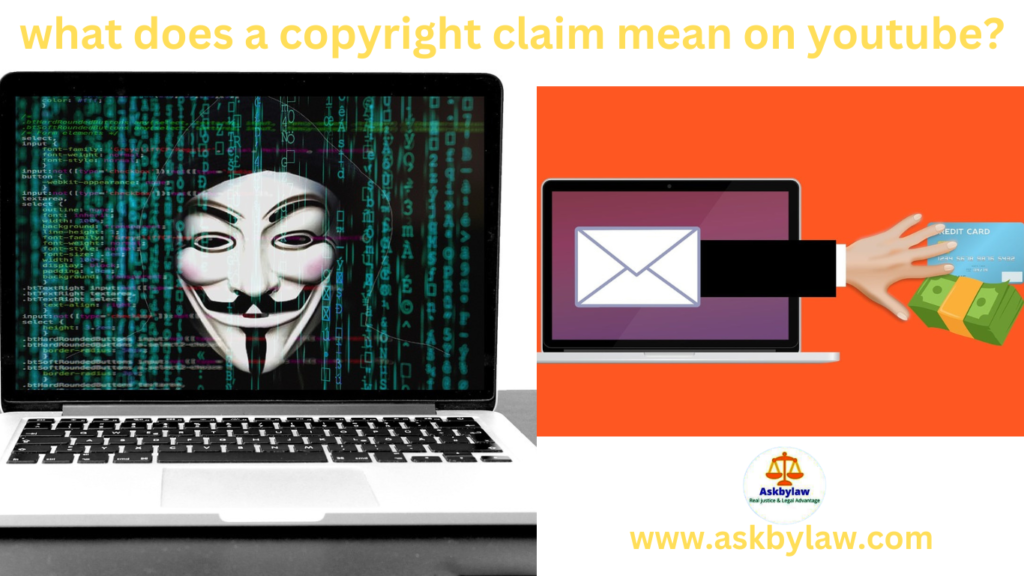
Have you uploaded some videoes to YouTube every day, only to find out that you have been sued by the copyright holder?
If, the said has happened to you, know that you are not alone. And claiming copyright claims are a common occurrence on YouTube, and they can be confusing for creators.
In today's blog, we discuss with you what is a copyright claim? How does it work? Also, What can you do if your video gets sued? We will provide information and explain it to you. We'll give you useful tips on "how to avoid copyright claims in the future"
Whether you're a new YouTuber or a Seasoned person. Read on to learn more about copyright claims on YouTube. Learn more about copyright claims on YouTube and protect your videos from copyright stress by reading our blog.
Subscribe to our blog for more tips on how to legally create and manage your YouTube channel well. Any copyright claim is a notice from YouTube that your video contains copyrighted material.
Any copyright claims may affect your ability to monetize your videos. There are two types of such copyright claims: Content ID claims and manual claims.
After the above discussion if you believe that your video does not infringe copyright. So there may be a copyright claim dispute for your channel. So you can take quick steps to avoid copyright claims on YouTube.
Did you aware that about 80% of YouTube video content that is protected by copyright? There are a lot of possible copyright claims there!
Learn how to comprehend copyright assertions on YouTube. We discuss with you. How to respond to them? And. How to prevent them in the future, in this blog post?
Understanding copyright assertions are crucial since they can have a significant impact on your YouTube channel. Continue reading to find out more about YouTube copyright issues and how to safeguard your channel. Also, take safety precautions for yourself.
I hope the said blog post is useful.
Whether are you a new YouTuber or a seasoned Professional? Read on to know more about copyright claim on YouTube.
Copyright claims are a common occurrence on YouTube, but how do they actually work? We'll look more closely at copyright allegations on YouTube in this section.
Including the role of YouTube's Content ID system, the process for filing a copyright claim. And the different types of copyright claim.
By understanding how copyright claims work, you'll be better equipped to protect your own content and deal with copyright claims filed against your videos.
A copyright claim can have a serious impact on your YouTube channel. Therefore, it's crucial to comprehend them and take precautions for your safety.
Continue reading to find out more about copyright disputes on YouTube and how to safeguard your channel.
YouTube's Content ID system is a tool that helps identify potential copyright violations. It works by scanning videos uploaded to YouTube to match copyrighted content that is registered with Content ID. If a match is found, the copyright holder can choose to claim the video. Which will give them exact control over how the video is used?
If you believe that your copyright has been violated on YouTube. You must file a copyright claim. The procedure for filing a copyright claim is relatively straightforward. You'll require to provide some basic information about the copyrighted material by you believe has been infringed, as well as the URL of the video you're claiming.
There are three main types of copyright claim on YouTube: first manual claim, second Content ID claim, and last third-party claim. Manual claims are filed by copyright holders who have not registered their content with Content ID. Content ID claims are filed by copyright holders who have registered their content with Content ID. A third-party claim is filed by companies that have been authorized by copyright holders to act on their behalf.
Copyright claims are common on YouTube. But, what are some of the most common scenarios that could lead to a copyright claim? The most frequent scenarios that can result in copyright claims are discussed in this section, including the unauthorised use of music, photographs, or video clips. We will also discuss the implications of fair use and transformative content on copyright claims.
By understanding the most common scenarios that can lead to copyright claims, you'll be better equipped to protect your own content and avoid copyright claims filed against your videos.
Copyright claims can seriously impact your YouTube channel, so it is important to understand the most common scenarios that can lead to copyright claims, and take steps to avoid them.
Fair use is a legal principle to permits limited use of copyrighted material without the permission of the copyright owner. Mutable material is material that has changed significantly from its original form, in some cases. Fair use and transforming content can protect you from copyright claims. However, it is important to consult with an attorney to determine whether your use of copyrighted material falls under fair use.
Read on to learn more about the most common scenarios that can lead to copyright claims on YouTube and how to avoid them.
• Some of the most common scenarios that can lead to copyright claims include:
• Using copyrighted music without permission or attribution.
• Using copyrighted images or video clips without permission or attribution.
• Sampling copyrighted music without permission or attribution.
• Creating a derivative work of copyrighted material without permission.
I hope this helps!
Copyright claims can have a significant impact on your YouTube channel. In this section, we'll discuss the consequences of receiving a copyright claim on YouTube, including potential consequences, such as video removal, copyright strikes, and channel fines. We will also highlight the importance of responding promptly and appropriately to copyright claims.
By understanding the impact of copyright claims, you will be better equipped to protect your own content and deal with copyright claims filed against your videos.
Copyright claims can have a serious impact on your YouTube channel, so it's important to understand the potential consequences and respond to copyright claims promptly and appropriately. Read on to learn more about the impact of copyright claims on YouTube and how to protect your channel.
If you receive a copyright claim on YouTube, there are several possible consequences. A copyright holder may choose:
Monetize your video and share revenue with the copyright holder.
If you receive a copyright claim, it's important to respond immediately. You can dispute the claim or accept it. If you dispute the copyright claim on YouTube, you will need to provide evidence to support your claim. If you accept the claim, your video will be affected as the copyright holder chooses.
If you receive three copyright strikes within a 90-day period, your channel will be terminated. This means that all your videos will be removed from YouTube and you will not be able to create a new channel.
In addition to copyright strikes, YouTube can also impose other penalties on your channel, such as:
Responding to copyright claims in a timely manner is important. If you do not respond to a copyright claim on YouTube within 30 days, the copyright holder may choose to remove your video or monetize your video without your permission.
• Reduced monetization opportunities.
• Restrictions on live streaming.
• Limitations on the ability to upload videos.
If you receive a copyright claim, it is important to respond promptly and appropriately. You should first review the claim to see if you believe it is valid. If you believe the claim is invalid on the basis of evidence, you can dispute the claim. If you believe the claim is valid, you can accept the claim or negotiate with the copyright holder. I hope this helps!
Copyright claims can have a significant impact on your YouTube channel. In this section, we'll discuss the consequences of receiving a copyright claim on YouTube, including potential consequences, such as video removal, copyright strikes, and channel fines. We will also highlight the importance of responding promptly and appropriately to copyright claims.
By understanding the impact of copyright claims, you will be better equipped to protect your own content and deal with copyright claims filed against your videos.
Copyright claims can have a serious impact on your YouTube channel, so it's important to understand the potential consequences and respond to copyright claims promptly and appropriately.
Read on to learn more about the impact of copyright claims on YouTube and how to protect your channel.
If you receive a copyright claim on YouTube, there are several possible consequences. A copyright holder may choose:
• Upload your video.
• Monetize your video and share revenue with the copyright holder.
• Block your video in certain countries.
If you receive a copyright claim, it's important to respond immediately. You can dispute the claim or accept it. If you dispute the claim, you will need to provide evidence to support your claim. If you accept the claim, your video will be affected as the copyright holder chooses.
If you receive three copyright strikes within a 90-day period, your channel will be terminated. This means that all your videos will be removed from YouTube and you will not be able to create a new channel.
In addition to copyright strikes, YouTube can also impose other penalties on your channel, such as:
If you receive a copyright claim, it is important to respond promptly and appropriately. You should first review the claim to see if you believe it is valid. If you believe the claim is invalid on the basis of evidence, you can dispute the claim. If you believe the claim is valid, you can accept the claim or negotiate with the copyright holder. Responding to copyright claims in a timely manner is important. If you do not respond to a copyright claim within 30 days, the copyright holder may choose to remove your video or monetize your video without your permission. I hope this helps!
GET IN TOUCH
Copyright claims can be a headache. But they don't have to be, we will walk you through the steps on how to respond to a copyright claim on YouTube. We will discuss available options, such as disputing the claim, seeking permission, or removing the disputed content. We will also explain the process of filing a counter-notice and its possible consequences.
By understanding the steps to resolve copyright claims, you will be able to protect your own content and combat copyright claims filed against your videos.
Copyright disputes can negatively affect your YouTube channel, so it's critical to know how to handle them and to respond quickly. Continue reading to find out more about resolving copyright disputes on YouTube and safeguarding your channel.
There are numerous actions you can take to settle a copyright claim you get on YouTube:
Remove disputed content. If you do not wish to dispute the claim or seek permission, you may remove the disputed content from your video. This will remove the copyright claim, but it will also remove the content from your video.
First, you need to review the claim to see if you believe it is valid. If you believe the claim is invalid, you can dispute the claim.
If you dispute the claim, you will require providing evidence to support your copyright claim on YouTube. You can do this by providing a link to the original source of the content or by explaining how your use of the content falls under fair use.
If you believe the claim is valid, you can obtain permission from the copyright holder to use their content. You can do this by contacting the copyright holder directly or by using YouTube's Content ID match tool. Enter a counter-notification. If you dispute a copyright claim and the copyright holder doesn't respond, you can file a counter-notice. This will allow you to restore your video and keep monetizing it.
If you issue a counter-notice, you will require providing specific information, including your contact information, the URL of the claimed video, and a statement that you believe the claim is invalid. You will also need to swear or affirm that the information you are providing is accurate.
If the copyright holder does not respond to your counter-notice within 10 business days, your video will be reinstated and you will be able to keep monetizing it. If the copyright holder responds, they can file a lawsuit against you. I hope this helps!
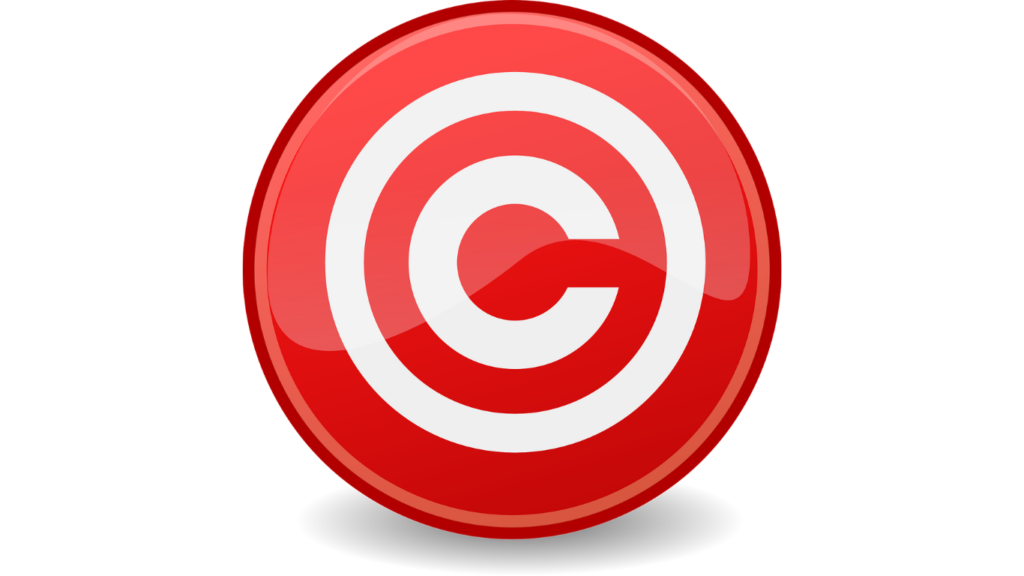
Your video's power to earn you money is gone.
First, you. Sign in to YouTube Studio. From the left menu than after selecting Copyright and Click New Removal request
Copyright protection applies to works created after January 1, 1978, and listen to you it is valid for the author's lifetime plus an extra 70 years.
Listening to you carefully, No. The only thing that will delete the claim is deleting the copyrighted content.
Hear to carefully. Deleting a video doesn't make the copyright claimant or copyright strike go away
In this blog post, we have discussed the basics of copyright claims are on YouTube. We've covered what copyright claims, how they work, and the potential consequences of receiving a copyright claim. We've also discussed steps you can take to resolve copyright claim on youtube.
We hope this blog post has been informative: If you, have any questions or doubt about copyright claims on YouTube, please feel free to comment below.
A copyright claim is a notification from YouTube that your video contains copyrighted material.
Copyright claims can have a significant impact on your YouTube channel.
There are three main types of copyright claims on YouTube: manual claims, Content ID claims, and third-party claims.
You can dispute a copyright claim, get permission from the copyright holder, or remove the disputed content from your video.
If you receive a copyright claim, it is important to respond promptly and appropriately
If you file a counter-notice, the copyright holder has 10 business days to respond. If they don't respond your video will be reinstated
In order to protect your content, it is important to be aware of copyright laws and policies. You may contact the YouTube Copyright Center and the U.S. You can do this by visiting the Copyright Office website. We encourage you to share your experiences with copyright claims on YouTube in the comments section below. We'd also love to hear your questions about copyright claims.
#Copyrightstrike #YouTube copyright #YouTubecopyright infringement #YouTube copyrightclaimprocess #YouTubecopyrightclaimappeal #YouTubecopyrightclaimconsequences #YouTubecopyrightclaimmonetization #avoidcopyrightclaimYouTube #PreventcopyrightclaimYouTube, #ProtectyourcontentonYouTube #CopyrightclaimvsCopyrightstrike #YouTubecopyrightclaim vs copyrightstrike #CheckcopyrightclaimYouTube
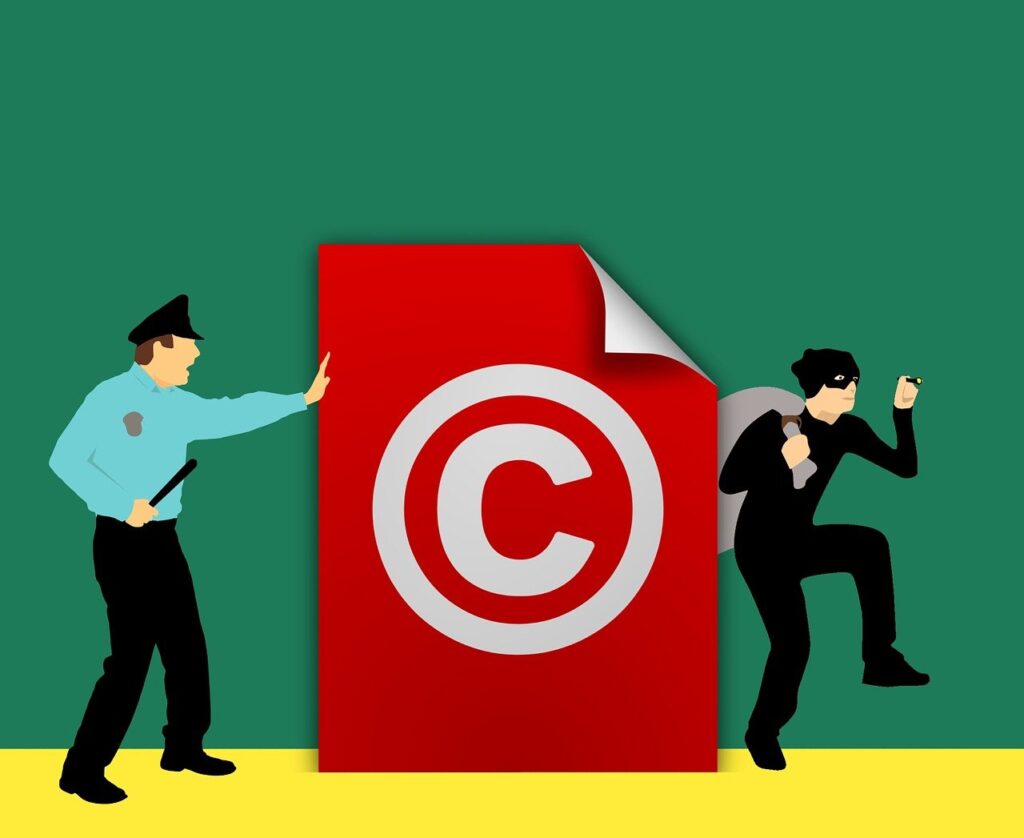
Any intellectual property is a valuable creation originating from the human mind. These creations can be artistic designs, designs, names, physical objects, and images.
Such physical assets are considered to be very indispensable and useful assets for every country or business. Also protecting intellectual property is a primary and useful concern for every creator of intellectual property.
We are here to discuss how to protect your intellectual property today in this article.
1. You need to know. What kind of intellectual property do you hold?
2. How should your intellectual property be well documented to ensure who owns it?
3. What tools are readily available in law for you to keep your intellectual property safe and secure? It is also very important.
4. When your intellectual property is damaged or your rights are violated for any reason?
With the help of today's article, you can make your intellectual property more secure and succeed in protecting the real value of intellectual property.
Eat to our comprehensive companion to guard your intellectual property! In the moment's presto- paced and technology-driven world, intellectual property (IP) has come an inestimable asset for businesses and individuals.
Whether you're an entrepreneur, innovator, artist, or creative professional, guarding your innovative ideas, inventions and cultural creations is essential to ensure that your hard work doesn't go unnoticed or exploited.
In this blog post, we will claw into the world of intellectual property and explore the significance of guarding it.
We'll bandy different forms of intellectual property, similar to patents, trademarks, imprints, and trade secrets, and punctuate the implicit pitfalls and challenges associated with each.
Understanding the value and significance of your intellectual property is just the morning. We'll guide you through practical ways, stylish practices, and proven strategies to effectively apply your IP rights.
From enforcing comprehensive security measures to navigating legal results, our end is to empower you with the knowledge and tools you need to cover your intellectual property means. But it does not stop there.
We know your intellectual property is not just about protection; It's also about maximizing its eventuality. That is why we'll also explore ways to work your IP, similar to licensing, hookups, and commercialization, to help you induce profit and unleash new openings.
Whether you're a seasoned professional or new to the world of intellectual property, this blog post is designed to be your go-to resource.
We have collected expert perceptivity, real-life exemplification, and practicable tips to help you navigate the complex geography of IP protection and take control of your intellectual means.
So, if you are ready to begin this trip to cover your intellectual property, cover your inventions, and harness the true value of your creativity.
Defining intellectual property and its colorful forms Intellectual property (IP) refers to impalpable creations of the mind that are defended by law.
It encompasses a wide range of creative and innovative means that individualities or businesses produce.
The main forms of intellectual property include Patents that cover new inventions and give exclusive rights to the innovator for a specified period. They give legal protection for the functionality and design of inventions, encourage invention, and help others from making, using, or dealing with patented inventions without authorization.
Trademarks are symbols, ensigns, names, expressions, or designs that distinguish and identify the source of goods or services.
They cover brand identity and help consumers separate between products or services in the request.
Trademark enrollment subventions exclusive rights and allows trademark possessors to help others from using analogous marks that may beget confusion among consumers.
Imprints cover original workshops of authorship, including erudite, cultural, musical, and dramatic workshops. They grant generators exclusive rights to reproduce, distribute, display, perform, and modify their workshop.
Brand protection arises automatically upon creation, furnishing legal protection against unauthorized copying or use of copyrighted material.
Trade Secrets Trade secrets are precious, nonpublic business information that provides a competitive advantage. It may include formulas, processes, client lists, software, or other personal knowledge.
Like patents, trademarks, and imprints, trade secrets are defended by nondisclosure agreements and other confidentiality measures rather than public enrollment.
Value and Importance of Intellectual Property mean Intellectual property means holding great value in moment's knowledge- grounded frugality.
It's the result of mortal creativity, invention, and investment of time, coffers, and trouble. Then are some crucial aspects pressing their significance and profitable value Intellectual property means can induce significant profit aqueducts through licensing, deals, or royalties.
They enable generators and businesses to monetize their inventions and creative workshop, drive profitable growth and encourage investment in exploration and development.
Competitive advantage IP means giving a competitive edge in the request. They separate products or services, enhance brand recognition, and establish a character for quality and invention. Intellectual property protection protects this advantage and helps businesses stay ahead in a competitive terrain.
Encourages Innovation, Intellectual property protection fosters a culture of invention by furnishing impulses for formulators, artists, and generators to partake in their ideas with confidence. It rewards and encourages the development of new technologies, and creative workshops’s and results in social challenges.
Despite the value and significance of the said intellectual property, it faces pitfalls and challenges, including violation of unauthorized use or violation of IP rights that may harm the exclusive rights of the creator or proprietor.
This can lead to financial loss, reputational damage, and loss of brand equity. It's critical to instantly identify and address cases of violations...
That imitating an original brand or invention poses a significant threat to intellectual property possessors. They can harm not only request share and profit but also consumer confidence and safety.
Guarding intellectual property becomes more complicated due to different legal systems and enforcement mechanisms. Businesses need to navigate transnational laws and establish effective strategies to cover their IP means worldwide.
It's essential for generators, experimenters, and businesses to understand intellectual property, its colorful forms, its value, and the pitfalls associated with the violation.
By understanding these introductory generalities, individualities, and associations can take an informed way to effectively cover and work their intellectual property means.
1. Music Industry Unauthorized sharing and downloading of copyrighted music has rebounded in significant profit loss for musicians and record markers. The arrival of digital platforms stressed the heightened need for brand protection and licensing models.
2. Technology Sector High-profile cases of patent violation, similar to those involving major Smartphone manufacturers, redounded in legal battles and significant fiscal agreements.
These cases emphasize the significance of guarding and guarding precious patents.
3. Fashion and luxury goods fake products imitating luxury brands not only beget profit loss but blemish the brand's character and adulterate its exclusivity.
This shows the negative impact of IP violations on fashion assiduity. These exemplifications serve as exemplary tales, showing the far-reaching consequences of shy IP protection.
They emphasize the significance of enforcing strong security measures to cover your creative means.
By proactively guarding your intellectual property, you can cover your inventions, maintain your request advantage and reduce the pitfalls of violation.
Real-life cases show the palpable impact of IP theft on businesses and individualities, buttressing the urgency and significance of IP protection in the moment's largely competitive and globalized business.
Trademarks, Imprints and Trade Secrets defended To effectively cover your intellectual property, call the following strategies special to each shape of IP Patents Work nearly with patent attorneys to guide through previous art quests and train complete patent operations. This ensures that your invention meets the conditions for patentability and receives the applicable legit.
Trademarks conduct a complete trademark hunt to insure your taken mark is accessible for enrollment. Once cleared, train a trademark operation with the applicable intellectual property department to secure exclusive birthrights to your brand name, totem or hallmark. Brand Carry the brand hallmark (©), your name, and the time of coinage on your initial workshop. While brand security arises automatically upon coinage, your brand is defended in the US. Registering with the Copyright Office provides fresh legit.
Trade Secrets utensil strong screen measures to cover your trade secrets, similar confining access to nonpublic information on a want-to-know base, enforcing confidentiality agreements with workers and mates, and maintaining secure IT systems to help unauthorized access.
Best Practices for maintaining sequestration and Precluding Unauthorized Access It’s important to keep your intellectual property nonpublic to help unauthorized use or exposure. Call the following stylish practices.
Exercise an NDA when participating in nonpublic information with workers, contractors, mates, or implicit investors. These agreements establish legit scores to conserve confidentiality and circumscribe the use of sensitive information.
Establish clear programs descrying the running of sensitive information, involving the use of particular bias, secure train storehouse, and secure message channels.
Physical and Digital Security Measures apply physical screen measures, similar to defined access to nonpublic areas and secure storehouses for physical documents.
Exercise encryption, firewalls, secure networks, and strong word programs to cover digital means. Regular inspection and monitoring conduct regular checkups of your IP means and internal processes to identify susceptibility and ensure compliance with screen protocols. Examiner responsible for any suspicious exertion or unauthorize access to sensitive information.
Empowering agreements and non-disclosure agreements play an important part in guarding your intellectual property birthrights Contracts exercise well-drafted contracts when engaging in collaboration, cooperation, or outsourcing arrangements. Easily outline power birthrights, circumscriptions and suffered usages to cover your IP means.
#IPprotection #secureyourideas #Creativerights #Innovationinspiration
Still, call a licensing arrangement, if you want to monetize your IP. Craft a licensing consensus that outlines the tours and conditions for the empowered use of your IP while maintaining control over its quality and veracity.
Non-Disclosure Agreements( NDAs) When telling nonpublic information to third parties, similar to implicit investors or business mates, exercise an NDA to establish legit walls and help unauthorized exposure or use of your personal information.
By enforcing these strategies and stylish practices, you can significantly enhance the security of your intellectual property means.
Whether it's patents, trademarks, imprints, or trade secrets, maintaining confidentiality, or using contracts and agreements, guarding your precious creations requires a complete path to the IP screen.
Overview of legal avenues for IP protection and enforcement When it comes to intellectual property (IP) protection and enforcement, there are several legal avenues available.
Registering your IP similar to patents, trademarks, and imprints with the applicable intellectual property services provides legal recognition and protection. It establishes a public record of power and strengthens your rights in case of violation.
Action still, you can take legal action through civil action, if your IP rights are violated. This includes filing suit, presenting substantiation of violation, and seeking remedies similar to injunctions, damages, or royalties.
An ADR mechanism similar to an agreement or arbitration gives non-legal options for resolving IP controversies. These processes involve neutral third parties who help the parties reach a mutually agreeable agreement.
International Security For global IP protection, transnational covenants, and conventions similar to the World Intellectual Property Organization (WIPO) give mechanisms for guarding and administering IP rights across multiple authorities.
Patent, Trademark, and Copyright Filing Procedures, Forms for patents, trademarks, and imprints include specific procedures and conditions
To file a patent, conduct a previous art hunt, prepare a detailed patent operation, describing the novelty and mileage of your invention, and train it to the applicable patent office. The operation undergoes examination, and if approved, a patent is granted, which provides exclusive rights for a specified period.
The process of registering a trademark involves conducting a comprehensive hunt to insure its vacuity, preparing a trademark operation with required information and templates, and submitting it to the applicable trademark office. Examination and blessing lead to trademark enrollment and protection.
Brand protection arises automatically upon the creation of an original work. Still, to gain fresh legal benefits, similar to the capability to take legal action, you may freely transfer your brand to the US. You can be registered at the Copyright Office.
The enrollment process generally involves submitting an operation, a dupe of the work, and the applicable figure. Importance of consulting intellectual property Attorneys and expert’s consultation with intellectual property attorneys and experts is important for the effective IP operation and legal guidance Litigation and Knowledge Intellectual property attorneys specialize in IP laws and regulations.
They've the Litigation to navigate the complications of the enrollment process, understand legal conditions, and advise on the stylish strategies to cover and apply your IP rights.
An attorney can assess the implicit pitfalls to your IP and develop a comprehensive legal strategy acclimatized to your specific requirements.
They can help identify implicit violations, draft contracts, and agreements, and guide you through enforcement conduct if necessary.
Intellectual property attorneys can help maximize the value of your IP means. They can give guidance on licensing, accommodations and IP portfolio operation to help you make informed opinions aligned with your business pretensions.
Navigating the intellectual property legal geography requires a deep understanding of the legal avenues available, the formation processes for patents, trademarks, and imprints, and the guidance of educated IP attorneys and experts.
By using our knowledge and Litigation, you can effectively cover, apply and maximize the value of your intellectual property means.
Examining the success stories of individuals and businesses can provide valuable insights into effective IP protection and monetization. Here are some inspiring examples:
XYZ Pharmaceuticals has developed a groundbreaking drug to treat a rare disease. They obtained a patent for their innovative design, preventing competitors from copying their products.
Through strategic licensing agreements with global pharmaceutical companies, XYZ Pharmaceuticals has successfully commercialized its IP, generating significant revenue by ensuring broad patient access to its life-changing treatments.
ABC Tech Innovations created a revolutionary software solution that revolutionized the cybersecurity industry. They obtained multiple patents to protect their unique algorithms and data encryption methods. By enforcing its IP rights through litigation against infringing competitors, ABC Tech Innovations maintained its preserved market dominance and successfully negotiated licensing deals with industry leaders, resulting in significant financial gains.
Art Studio, a small design company, copyrights their original artwork and designs. They strategically expanded their brand presence through online platforms and social media, showcasing their unique creations. Their efforts gained significant traction, leading to collaborations with renowned fashion brands, licensing agreements, and a dedicated global customer base. Artistic Studio's ability to protect its IP and leverage it for commercial success transformed its business into a recognized and profitable brand.
These success stories highlight key strategies and lessons for effective IP protection and commercialization:
Obtaining patents, trademarks, and copyrights early provides a solid foundation for protecting your IP assets. This prevents others from infringing on your creations and increases your bargaining power in licensing negotiations.
Collaborating with industry leaders through licensing agreements can provide access to broader markets, distribution networks, and resources. It enables you to monetize your IP while leveraging the expertise and resources of established players.
Monitoring the market for potential IP infringements and taking swift legal action when necessary is crucial. Enforcement actions deter violators, protect your rights and maintain your competitive advantage.
Establishing a strong brand presence and effective marketing of your IP assets can attract customers, investors, and potential collaborators. Use online platforms, social media, and targeted marketing campaigns to showcase the uniqueness and value of your IP.
Continuous innovation is required for continued success in IP protection and commercialization. Stay at the forefront of your industry by continuously developing new products, services, or technologies that build on your existing IP portfolio.
By studying these success stories and incorporating the strategies and lessons learned, you can more effectively navigate the IP protection and commercialization landscape.
Each story serves as an inspiration and a reminder that with the right strategy and a strong commitment to protecting and monetizing your intellectual property, you can achieve significant success.
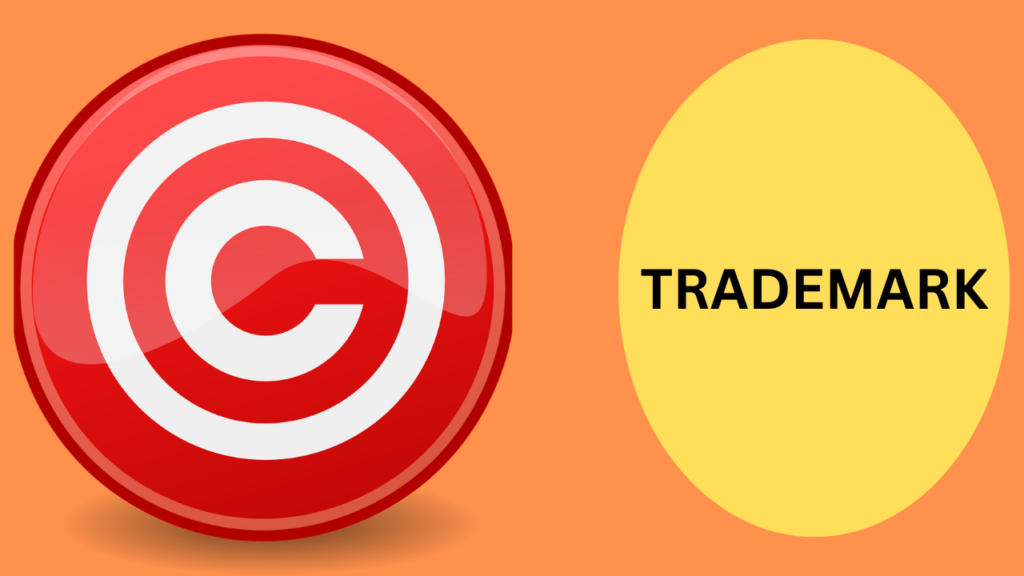
GET IN TOUCH
To increase the value of your intellectual property assets, consider exploring the following best ways:
Licensing allows you to allow third parties to use your IP in exchange for royalties or fees. This strategy enables you to generate revenue without being directly involved in manufacturing or distribution. Identify potential licensees who can effectively commercialize your IP in markets or industries beyond your reach.
Strategic collaborations and partnerships can unlock new opportunities for your IP. Joining forces with complementary businesses or industry leaders can expand your IP's reach and market penetration. Find partners who can add value to your IP through joint marketing efforts, access to distribution networks, or complementary product/service offerings.
Consider commercializing your IP directly by developing products or services based on your innovations. This approach gives you more control over the market presence and monetization of your IP. Develop a strong business strategy, conduct market research, and leverage your unique IP advantages to create a competitive advantage.
How to protect your intellectual property. Strategic collaborations and joint ventures offer numerous benefits for expanding the reach of your IP:
Collaborating with established companies provides access to their resources, including expertise, distribution channels, manufacturing capabilities, or research and development facilities. This accelerates the market entry of your IP and increases its commercial potential.
Partnering with companies with a strong presence in target markets or complementary customer bases can significantly expand the reach of your IP. Leveraging their existing network and customer relationships can increase sales, brand exposure, and market share.
Joint ventures allow you to share the risks and costs associated with IP development, production, marketing, and distribution. You can reduce the financial burden on your business while increasing the chances of success.
How to protect your intellectual property. When engaging in IP-related contracts, consider the following tips to maximize returns:
Clearly define the scope of the agreement, including rights granted, territories covered, duration, and financial terms. Clearly outlining these terms reduces the risk of disputes and ensures that both parties are aligned.
Implement safeguards to protect the privacy and integrity of your IP. Use Non-Disclosure Agreements (NDAs) to prevent unauthorized disclosure or use of your confidential information. Consider provisions, including IP ownership, infringement remedies, and dispute resolution mechanisms.
Consultation with experienced intellectual property attorneys is important in the negotiation and drafting of IP agreements. They can help you understand the legal implications, negotiate favorable terms, and ensure that your rights and interests are protected.
By taking advantage of licensing, partnership and commercialization opportunities, you can maximize the value of your intellectual property. Strategic collaborations and joint ventures offer access to resources, market expansion, and shared risks and costs.
When negotiating IP-related contracts, seek our legal advice to establish clear terms, protect your IP and optimize compensation. And by implementing these strategies, you can unlock the full potential of your intellectual property and gain significant value for your business.
(1) Patent (2) Copyright (3) Trademark and (4) Non-Disclosure Agreement
(1) Design rights (2) Copyrights (3) Patent rights (4) Trademark rights
1. Register and fulfill your IP under Trademark, Copyright, and Patent compliances.
2. Keep your Intellectual Property records under your control.
3. Take immediate action against violators of your intellectual property.
4. Do not implement the innovation of partnership or joint property as far as possible
5. Provide your staff with specialized training on safeguarding and being aware of your intellectual property.
6. Ensure and verify that development in ownership can be done even after registration in your intellectual property.
7. Prepare and implement a property utilization strategy with the help of an expert intellectual property lawyer
8. Immediately Implement a Non-disclosure agreement
9. Monitor who is preventing you from enjoying your intellectual property rights
10. Keep your idea or innovation a secret until your property is registered
The said blog post discussed the importance of protecting intellectual property. Including legal points like patents, trademarks, copyrights, trade secrets etc.
It highlighted the need for proactive protection to protect innovations and creative works and identified effective strategies for protecting IP.
It also discussed the legal avenues available for IP protection and enforcement, and the importance of consulting with intellectual property lawyers. The most important details are that protecting and maximizing intellectual property is essential for long-term success and competitiveness and that proactive step should be taken to protect innovations and creative works.
These steps include understanding the different forms of IP relevant to your business, implementing strategies to maintain confidentiality, and liaising with intellectual property lawyers and experts.
About the Author: Viren Dave is the founder and partner of a law firm called Advocate Askbylaw. He specializes in enhancing engagement and user peace of mind by helping troubleshoot user legal queries. And, starting his career as a lawyer, he supports solving many legal issues in civil, criminal, property, consumer, family, and corporate law. You can find him on his blog or under mentioned social links:
1. Cyber law cases-Best 1ways to protect your cyber life
2. What You 100% Best Need to Know About This Growing Crime
3. ways Legal and Moral Liabilities of the healthcare workers
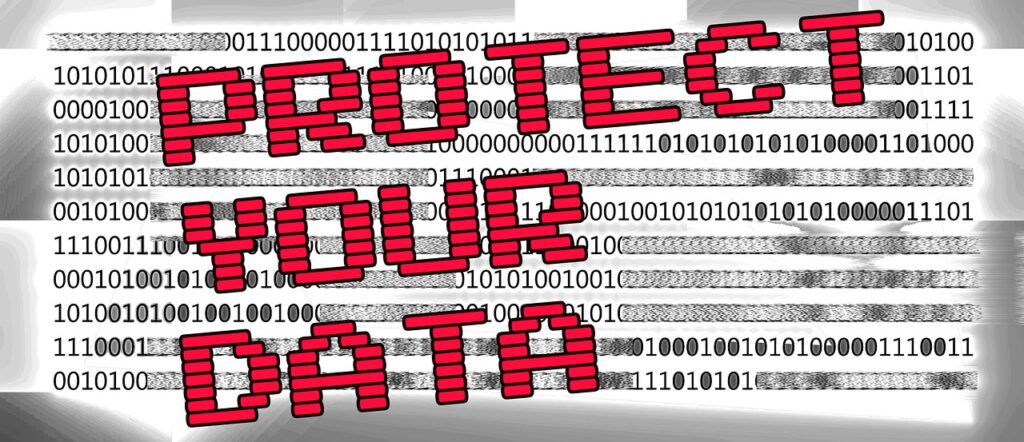
In today's day-by-day growing internet world, it becomes very necessary and imperative to understand cyber laws and be aware of them. This article will help you immensely to protect everyone's digital rights, learn here the basic principles of cyber law as well as the foresight and user behavior to investigate important areas like data protection privacy rights, and cybercrime, and understand your rights and responsibilities of cyber law—audit cyber law attitudes by defining roles.
Join us in this campaign to empower yourself by taking the initiative to confidently protect yourself, your company, and your society with the knowledge and awareness of cyber law and contribute to building a strong nation.
Welcome to the world of cyber law studies and interesting information on our Askbylaw Associates blog. In today's internet world, internet has become ingrained in our veins, internet and its related crimes and various academic aspects are affecting our lives directly or indirectly.
So it is imperative that you study cyber law. From studying your personal usage data to protecting your intellectual property rights and fighting to put a positive end to cybercrime, this cyber law can shape your digital system by navigating it.
Cybercrime leads to some greedy, avaricious, and violence-loving people misusing the Internet to make life difficult and dire for humanity-loving people.
Cybercriminals are becoming increasingly modernized by adopting the theory of organized and perfect crime through the Internet. They are preying on humanitarians by increasingly using various modern techniques to exploit readers' personal information by stealing, deceiving, dividing, and disrupting their businesses.
Our purpose in creating this blog is to provide you with practical insight and advice on identifying and complying with cyber law regulations. Whether you are an individual or an owner protecting your company from cybercrime, we are confident that this blog will surely help you.
In the moment's digital age, cybercrime and cyber law cases have come ineluctable. And with rapid-fire advances in technology and wide use of the Internet, cybercrime has come a major concern for individuals, businesses, and governments around the world.
Cybercrime refers to illegal conditioning committed in the digital realm. Cybercrime is known by the names mentioned then. These names are playing, identity theft, phishing, and data breaches.
It poses significant pitfalls to sequestration, security, and fiscal well-being. To effectively combat cybercrime moment, it's essential to have a comprehensive understanding of cyber law and cyber law cases.
And this includes the legal frame, regulations, and practices that govern online conditioning and cover individualities and companies from cyber pitfalls. The cyber law of any country elaborates on colorful aspects including intellectual property rights, data protection, cyber pitfalls, and online fraud.
And it provides a legal frame for probing, executing, and chastising cyber culprits and icing that justice is served in the digital sphere. Eventually being informed about cybercrime and cyber law empowers individuals and associations to take visionary ways to cover their digital means, educate themselves about online pitfalls, and promote a safer digital terrain.
We can work together to produce a flexible and secure cyberspace for you by fostering a deeper understanding of cybercrime and cyber law.
One illustration of cybercrime is phishing. Phishing is a system exercised by cybercriminals to deceive individuals into furnishing sensitive information, similarly as usernames, watchwords, or credence card details, by pretending to be a secure reality. The culprits generally shoot fraudulent emails or produce imitative websites that imitate licit associations, similar to banks, gregarious media platforms, or online retailers.
These fallacious dispatches frequently prompt the donors to relate to a sausage or give their particular information, under the guise of streamlining account details or naming a critical conclusion. Once the unknowing fatalities expose their sensitive information, the cybercriminals can exploit it for coloring vicious purposes, similar to identity larceny, fiscal fraud, or unauthorized access to accounts. Phishing radars can target both individuals and associations, and they remain to be a significant trouble in digital geography.
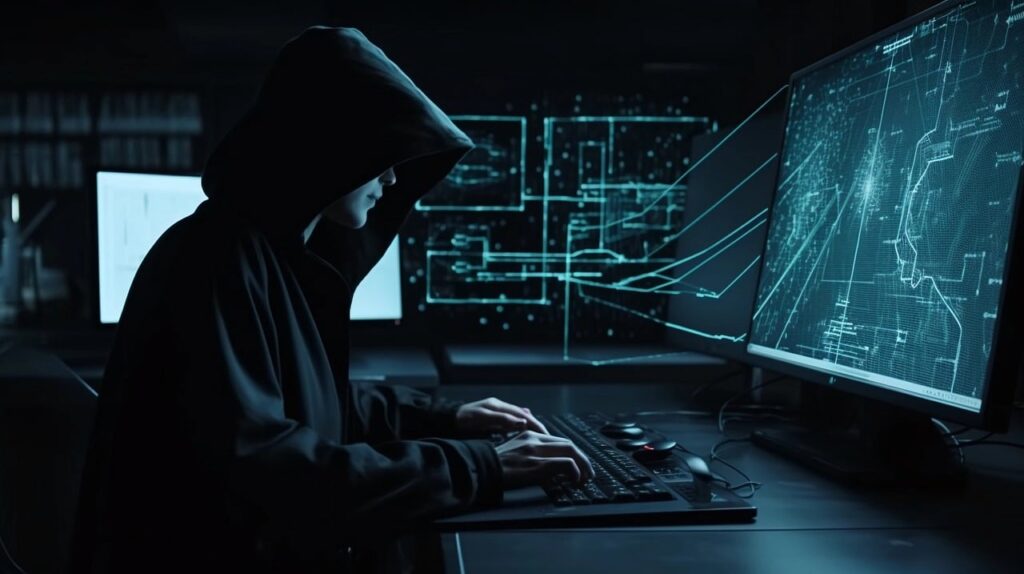
Inherent rights and responsibilities are fundamental factors of any legal system and cyber law is unprecedented in history. In the digital age, where technology is intertwined with our daily lives, it is important to gather the birth rights and responsibilities of cyber law.
Individuals have the inherent right to distinction, freedom of expression, and protection against unauthorized access to their particular information. Cyber law ensures that these birthrights are upheld and provide legality.
Remedies for breach of law. However, with birth rights come responsibilities. Obliged to display cybercrime responsibly and unethically in cyberspace, refraining from engaging in conditioning that violates the birthrights of others. This includes respecting intellectual property rights, refraining from cyberbullying and importuning, and using technology in a way that does not tamper with screens or disrupt the functioning of digital systems.
By acknowledging and accepting these birthrights and responsibilities, individuals can contribute to a safer and more inclusive digital landscape, advance trust, and make cyber law enforcement workable.
It is inevitable that we, as addicts of technology, fear our birthrights and responsibilities in the digital realm, as it empowers us to form informed opinions, encompass ourselves and others, and ensure a symphonic consent across the vast geography of cyberspace.
The complaint or Report computer or network vulnerabilities to the National Cyber Security Communications and Integration Center at 1-888-282-0870 or at www.us-cert.gov/report. Forward phishing emails or unauthorized websites to NCCIC at phishing-report@us-cert.gov

Operative cyber law enforcement and countermeasures play an important part in maintaining a safe and secure digital ecosystem. As the frequency of cybercrime continues to boost, it's imperative to have robust mechanisms in position to descry, seize and seize cybercriminals.
Cyberlaw enforcement agencies, both in public and international settings, are responsible for combating cyber threats and enforcing the rule of law in the digital demesne.
These agencies pay for technical chops and slice-byte technology to track down cyber criminals, collect digital substantiation and bring them to justice. Also, cyber law provides various remedies to remedy the damage caused by cybercrime. These remedies may include damages for loss of life, restoration of the addressing system or stolen data, and legal damages.
Warrants for felons. Also, cyber law enforcement agencies unite with international counterparts to attack cross-border cyber crimes, given the global nature of cyber problems.
By effectively administering cyber laws and enforcing applicable remedies, we can deter cybercriminals, protecting individuals and organizations from harm.
Cybercrime is a day-by-day growing legal issue. And it is important for businesses and individuals to prepare of digital risks and to take steps to protect themselves. There are a number of things that can be done to protect against cybercrime.
Using strong passwords and security questions
• Keeping software up to date
• Being careful about what information you share online
• Using a firewall and antivirus software
• Being aware of phishing scams
The police seek a bond for the fatality. She/he must purport that they will pay 1.5 moments the reimbursed quantum to the bank in case their claim is false or if other calls are made on the quantum.
| Unauthorized use or access of computer or mobile and gaining advantages | Punishment |
| To get federal or state security information | Up to Ten(10) years |
| Unauthorized use or access of computer or mobile and gaining advantages | First conviction 5 (Five) years Second conviction less than 20(Twenty) years |
| Unauthorized use or access of computer or mobile and get information | First conviction 1(One) year Second conviction less than 10(Ten) years |
| Intentionally damage of transmission | First conviction less than 10(Ten) years Second conviction less than 10(Ten) years |
| Extortion through computer | First conviction 5(Five) years Second conviction less than 20(Twenty) years |
| Password related offense | First conviction 1(One) year Second conviction less than 10 (Ten)years |

The ever-evolving geography of technology brings forward arising trends and an instigative future for cyber law. As creations similar as artificial intelligence, the Internet of Effects, and blockchain remain to reshape our digital world, the field of cyber law must acclimatize and evolve alongside.
One showy trend is the seat on data security and sequestration. With the added collection and application of particular data, there's a growing want for complete regulations that guard individualities’ sequestration birthrights and govern the responsible running of data by associations.
Another rising trend is the transnational collaboration and adjustment of cyber ordinances. As cyber pitfalls transcend public boundaries, cooperation among countries is essential to combat cybercrime effectively. Sweats to establish global fabrics, covenants, and collective legit
Backing agreements will remain to fashion the future of cyber law. Also, the ascent of cyber conflict and country-patronized hacking highlights the significance of developing robust legit.
Digital fabrics to manipulate this new format of truculence in the digital demesne. The future of cyber law also holds expostulations and openings in areas similar to artificial intelligence, independent instruments, and virtual currencies, where legit.
Digital fabrics need to acclimatize to the special legit and ethical allegations they present. By staying abreast of rising trends, embracing technological creations, and furthering a visionary path to legislation, the future of cyber law holds immense eventuality to cover individualities’ birthrights, foster invention, and ensure a secure and inclusive digital society for conceptions to come.
Other states have not created cyber-related laws as the federal US has enough laws. However, the following laws are governed by the states.
1. California consumer privacy Act (CCPA)
2. SHIELD ACT-New York
3. Cybersecurity laws of New York
Prohibits unfair or misleading business practices in the federal market.
1. Identify 2. Detect 3. Respond 4. Protect 5. Recover 6. Rebuild
In conclusion, an understanding of cybercrime and cyber law is necessary in the moment's digital period. Cybercrime poses significant pitfalls to individualities, companies, and governments, challenging a complete knowledge of the legit.
Cybercrime and regulations that govern online conditioning. By feting the birthrights and liabilities in cyber law, individualities can contribute to a safer and further inclusive digital terrain.
Operative cyber law enforcement and remedies are pivotal in combating cyber pitfalls, arresting perpetrators, and furnishing remedies for fatalities. As technology advances and new trends clip, the future of cyber law holds immense eventuality to cover sequestration, address ethical counter-accusations, and foster invention. It's essential for individuals and associations to stay informed, acclimatize to evolving trends, and laboriously fascinate in sweat to make a flexible and secure cyberspace for all.
By embracing the principles of cyber law, we can inclusively work towards securing our digital means, promoting trust, and icing a symphonious concurrence in the digital demesne.
Remember, You are not alone.
About the Author: Viren Dave is the founder and partner of a law firm called Advocate Askbylaw. He specializes in enhancing engagement and user peace of mind by helping troubleshoot user legal queries. And, starting his career as a lawyer, he supports solving many legal issues in civil, criminal, property, consumer, family, and corporate law. You can find him on his blog or under mentioned social links:
GET IN TOUCH
M&A contract negotiation transactions become rigid and multilateral as they involve law and various stakeholders as parties. That is why M&A practices require special focus and concentration. Contract negotiations are a useful part of the M&A process. In order to successfully negotiate a contract in the M&A Contract Negotiation process, the executive has to use his interest, confidence-building skills, communication, contract negotiation techniques and enthusiasm.
In order, to successfully negotiate contracts in the M&A process, acquisition executives have to find M&A pain points and find possible solutions to them. For which the M&A acquisition executive must study with the knowledge of the potential costs, how much passion is available in the market, what is the new technology, and how to take steps in the dynamic market. M&A acquisition executives need to have a clear and specific outline of how the deal fits together with the company's long-term goals and how they will focus on future growth and development.
An M&A acquisition executive must act in a manner that protects the deal by identifying the pain points of the deal, proposing solutions, presenting the benefits, understanding the dynamics and direction of the business, communicating effectively, using leadership skills, and engaging all stakeholders involved in the acquisition deal to make the negotiation successful. So that success can be achieved by aligning the needs and goals of all parties.
Due to the involvement of law in the merger and acquisition process, businessmen find such transactions cumbersome and multi-party transactions. Since M&A transactions involve more than two stakeholders, reducing contractual stakes in the entire merger and acquisition process is key. Are you tired of negotiating merger and acquisition agreements? Are you feeling frustrated and frustrated negotiating merger and acquisition agreements? Do you want to verify that you are getting the best growthful way to grow your business? Listen. If your answer to all the above-mentioned questions is "no" in your mind, Listen, then you need to read the article further for more solutions. Our contract negotiation expert team has years of experience and knows exactly how to get you the best deals you deserve.
Often negotiating mergers and acquisition agreements can be difficult and stressful. In particular, we want to be by your side when you are contributing to the rigid legal terms of the contract and useful financial practices. Our law firm's team has expert knowledge and experience to direct you through any M&A contract negotiation process and ensure you get the most out of your deals. Our law firm's approach to any merger and acquisition transaction is simple.
We listen to your needs and your pains. And understand your desires After listening to and understanding you we create a strategic performance plan tailored to your unique situation. And we operate very close to our clients so that our clients can make the contract terms comfortable. And also can protect their business interests. Whether your company or your startup is a limited liability company or a large corporation, our team will guide you in negotiating your merger and acquisition agreement and you will be proud of our ability to process deals with you to achieve impossible results. We are committed to guaranteeing.
Then why should you wait? Contact us today to learn how we can help you negotiate merger and acquisition agreements and grow your industry.
In mergers and acquisitions of any company where the interests of more than one person are involved, each person has some concern with his personal interest. In order to successfully negotiate any M&A contract, it is essential to identify and understand all the individuals involved in the process. Here are the parties involved in contract negotiations in mergers and acquisitions:
The owners or investors of any company will be anxious and eager to get the maximum value of their invested money they may also have certain conditions. Those are trying to get more value for their investment by increasing their importance and influence in such deals by increasing their importance and influence in such deals.
As per law, the board of directors of the company can utilize has the power to grant or dismiss the proposed proposal of the M&A contract negotiation in the interest of the company. Is the board of directors handling their company's mergers and acquisitions optimally? To ensure this, the board of directors may also be involved in the negotiation of merger and acquisition agreements.
He has a special eye on the company's executive and management mergers and acquisitions proposed deals. Because they are eager to ensure that their interests and benefits will be protected in the new company after the merger of the company? As it is the responsibility of the executive and management, they are constantly worried about their role
Since the company's investors and bankers have invested their money, will their financial interests be fully protected in the new company? All investors and bankers are more likely to be present at merger and acquisition agreement negotiations to ensure that.
In negotiating any merger and acquisition agreement, the terms stated in the deal are binding. So whether lawyers or legal advisors participate in merger and acquisition agreement negotiations to optimize the legal obligations for the new company, whether the deal is done according to contract law? He can make sure of that.
As the nature, size of the company, and other rules of merger and acquisition agreement negotiations are followed by government and semi-government bodies in the negotiation of merger and acquisition agreements, All the regulatory bodies can also participate in merger and acquisition negotiations to ensure that the rules are properly followed or not to approve the proposed deal.
There is a high possibility of employees/laborers being present during the negotiation of merger and acquisition agreements. Because whether the new company will protect the benefits and interests of the employees/Workers in the same way as they protected their benefits and interests in the old company? They can ensure that by being present at the negotiations.
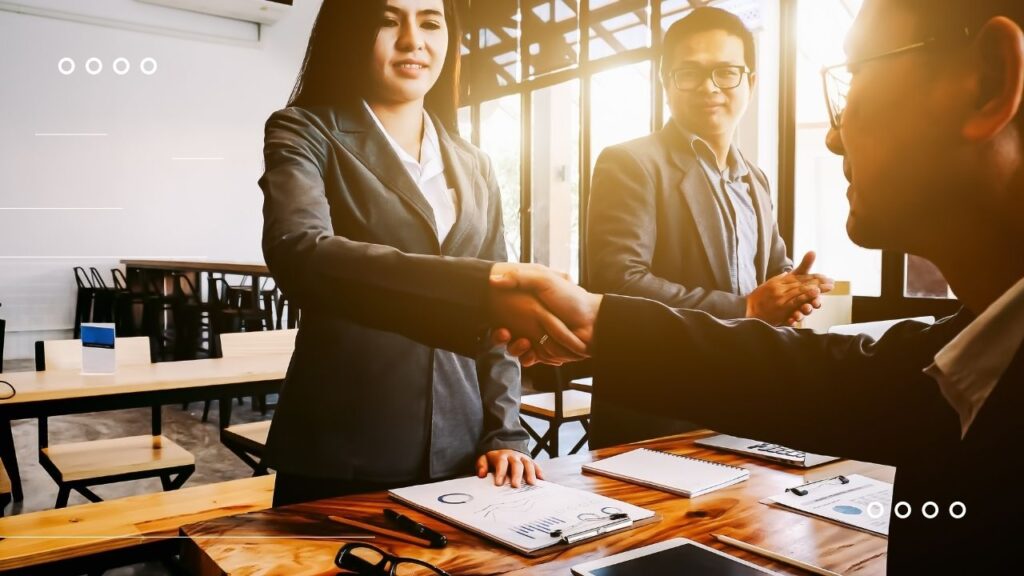
The contract mainly includes the purchase price, payment structure, representations, and post-closing obligations of the company. The entire process can be tedious and even challenging, which is why it is imperative to have expertise in legal and business matters in such transactions. I discuss with you the following elements of strategy.
It is very important and useful to know the objectives of any merger and acquisition agreement before starting negotiations. Because also such deals require strategic reasoning and assessments of the risks and challenges involved against the desired outcomes. Therefore, such targets must be aligned with the focus and acquisition priority and targets.
Negotiations for merger and acquisition agreements require the involvement of individuals who are well-versed in legal, financial, and business skills. They should have a clear understanding of the objectives and process of the deals. Also, such a team should be led by an experienced senior executive. And such senior executives should have entire authority and power to make all decisions on behalf of the company.
Identify your priorities for any successful negotiation, then create your fantasy plan. And the obstacles or challenges encountered during the implementation of the strategy have to be considered and prepared realistically. It must keep in mind that such a strategy should not adversely affect the objective of the company and the interests of all the parties associated with engaged to the company.
Any merger and acquisition agreement contains its terms and conditions. Such terms and conditions that provide the right fuel to the company deal, so that the purchase price payment structure, including representations and warranties and post-closing liabilities of the company, are discussed are necessary and imperative. So it is very necessary and imperative in the interest of the company for the senior executives to recognize and understand such terms and conditions.
In any merger and acquisition agreement, certain apparent or hidden risks and challenges may arise prior to the execution of the agreement. Thus, it is necessary to identify such risks and challenges in the first place, Also it is far better to prepare and implement a strategy to overcome them. However, this includes identifying deal breakers, understanding the legal regulatory environment, and preparing a contingency plan.
Any merger and acquisition agreement has to consider various closing obligations such as employment agreements, competitive and non-compete agreements, and transitional services. It is beneficial to understand these obligations and execute negotiations by imposing terms that are favorable to the company. Primarily transit services and employment and non-competition matters are imperative so that they cannot be neglected.
Before negotiating a company's merger and acquisition agreement, Remember, it is important to be aware the said process can a tense and adversarial. Thus, it is important to maintain the importance of relationships as the process is based on trust and respect.
The process of merger and acquisition mainly involves legal matters and understanding the intricacies of such legal matters and optimizing the adversities therein becomes very necessary and imperative. Also, since mergers and acquisitions involve multiple interests, it is necessary to tailor the rules and conditions to navigate the contractual deal toward success. Hiring a law firm that specializes in mergers and acquisition contract negotiation helps in identifying the company in a timely manner.
Forbes has also expressed its views on mergers and acquisitions.

Since there is a competitive environment in company merger and acquisition agreement negotiations, two or more parties may be involved in the environment. Also, the size and nature of the M&A contract negotiated deal may vary depending on various factors. Also along with this, the complexity of the law the many parties involved in the M&A contract negotiation, the number of companies being acquired and the level of demand of the companies, and the market conditions are all taken into consideration at the time of negotiating the company's merger and acquisition agreement. The year 2020 saw an increase of three percent in mergers and acquisition activities to 6.3% percent despite the adverse market conditions and challenges arising after the Covid-19 pandemic. This indicates that there is still fierce competition in the market for merger and acquisition deals. Deloitte reported and also states that sectors such as technology, healthcare, and life sciences have felt an increase in the highest levels of merger and acquisition activity. Because it involves the interests and benefits of more than two parties, all parties can see the maximum value of their investment. When the assets of any merging or acquiring company are high, such a company is vying for a takeover. The cost of mergers and acquisitions is quite likely to increase very optimistic manner. And also it has the potential to challenge the status quo of such deals.
Any private companies and buyers are very aware of this matter. The report done by PWC has specifically mentioned this matter. Negotiation of mergers and acquisitions can be a very competitive field. The market has faced a promising increase in global activity due to the challenges that have arisen during the Covid-19 pandemic. Also, companies and investors seeking to engage in merger and acquisition agreement negotiations transactions should determine and determine their value by engaging in the negotiation and process to plan and execute the opportunities and competition rather than ignoring the competitive factor.
Mergers and acquisitions companies now days, a successful strategy is adopted to give legal form to the newly born company and efforts are made to achieve success by increasing its market share and demand. Mergers and acquisitions have become very popular buzzwords these days; any company looking to grow and expand does not see any other option without embracing the concept of mergers and acquisitions. Mergers and Acquisitions In order to conduct mergers and acquisitions of companies successfully, easily, and to bring various innovations in its propositions, and to achieve a defined financial structure, companies are easily adopting the option of mergers and acquisitions.
Along with this, there is an implicit truth that the process of merger and acquisition in the corporate world tends to be very challenging and boring. Due to the legal and regulatory provisions in the process leading to consolidation and acquisition of personhood there are many factors that influence and affect this process. Today in this article I will discuss with you the case of merger and acquisition companies in detail. And we will also discuss the definition types of merger and acquisition, due diligence, measures regarding finance and its advantages and disadvantages. Hope today's article will be useful to you by clarifying the incomplete and unclear understanding of mergers and acquisitions of your companies.
Mergers and acquisitions companies is the coming together of two companies devoting their existence to each other to form a new company with the aim of achieving and developing its position and success in the market by the new company. The established companies leave their existence and assume a new birth of the company.
Several different types of mergers and acquisitions companies have been outlined in the general business market and legal provision. I am sharing with you the information about what these different types are as mentioned below.
This is a type of merger in which two merging companies operate in the same industry and in the same product or services. Horizontal Merger The objective of this type of merger is to increase the company's market share and contribution by creating space and increasing the economic viability of the company while keeping the competition under control.
This type of merger is to operate at different stages in the supply chain of the same product or service in different departments. Distributors and manufacturers can also be included in this category. The purpose of a vertical merger may be to improve the company's supply efficiency, reduce costs and gain control over production.
In this type of merger, different types of industries or different types of businesses are joined. The purpose of this type of merger is to diversify the industry and reduce the risks involved by entering the market.
In this type, private companies can Mergers and acquisitions companies to take their business to the public market without going through the process of listing shares as per business practice. In this type of purpose, a private company acquires a public purpose company and tries to get it listed and succeeds in doing so.
This type of company makes a proposal to acquire another company, even though the other company may not be interested in the Mergers and acquisitions companies, but the acquisition can also be done as a hostile merger. In this type of merger, if there is a legal battle between the two companies and conflicts between the shareholders may arise, then why should the company adopt this type of merger?
In the business world, Mergers and acquisitions companies(M&A) are becoming more and more popular. And companies find and adopt ways to grow and expand their businesses. A company's M&A activities involve the integration of two or more companies into one entity, and can be driven by a variety of factors. In today's article, I will tell you the reasons why companies do mergers and acquisitions.
I believe that one of the primary reasons for any company to engage in Mergers and acquisitions companies (M&A) activities is to expand market share. Also, businesses can increase their market share by merging with, or acquiring, other companies. So that can increase their income and profit. And I believe that combining resources and expertise can help companies strengthen their position in the market and also gain a competitive advantage over their rivals. Please use the comment box to tell us what you believe.
Another reason for engaging in (Mergers and acquisitions companies) M&A activities in the industry is to diversify product or service offerings. Businesses can also expand their product line or service offering by acquiring a company that provides complementary products, or services. Companies can also reach new markets, and diversification can also help companies reduce risk by reducing their reliance on a single product or market.
From experience I can say that Mergers and acquisitions companies can also be driven by the desire to expand into any new geographies. By acquiring a company with an established presence in any new market, businesses can enter that market more quickly and with less risk. But the condition is if they enter it organically. I honestly believe that any geographical expansion can help companies reduce their dependence on the single market and also diversify their revenue streams.
Access to any new technology or intellectual property can also be an important driver of M&A (Mergers and acquisitions companies) activities. Businesses can gain a competitive advantage in their industry by acquiring a company with a patent portfolio, or proprietary technology. Which can be especially important in industries where innovation is critical to success?
Any merger and acquisition may also be motivated by the desire to achieve cost savings and economies of scale. Businesses can reduce their costs by combining company operations with mergers and acquisitions and eliminating redundancies. and can increase their efficiency. This can be especially important in industries with high fixed costs such as manufacturing companies.
Any company may be driven by the desire to eliminate competition by doing mergers and acquisitions. By acquiring your rival's company, businesses can eliminate a competitor from the market. Companies can increase their market share by doing mergers and acquisitions. This may be particularly important in industries with a limited number of competitors where market share is highly concentrated.
Mergers and acquisitions companies (M&A) are complex business transactions that can greatly benefit companies looking to expand their market share, gain access to new technologies, or diversify their portfolios. However, the M&A process involves several steps and can be challenging to navigate without a clear understanding of the process.
The first step in a company's M&A (Mergers and acquisitions companies) process is planning and strategy development. This mainly involves determining the company's objectives for the merger or acquisition and identifying potential risks and benefits. We believe it is also important to analyze the target market, the competition, and the target company's financial performance to determine whether any company is aligned with the buyer's goals.
After any company has developed a plan and strategy, the next step is to identify potential targets. This involves conducting extensive research to find prime acquisition targets, which must be aligned with the company's goals. A company's target identification process may include market research, networking, or hiring investment banks or brokers to find potential targets.
After identifying any company's potential targets, the company should conduct due diligence to ensure that As they are suitable for target acquisition?. And due diligence includes a comprehensive review of the target company's financial and legal documents, operations and management team. I believe it is critical to identify any potential risks or liabilities associated with any acquisition target.
Valuation and pricing are critical steps in any M&A (Mergers and acquisitions companies) process. A key step involves determining the target company's fair market value, including its assets, liabilities and future earnings potential. And the evaluation process can include things like hiring financial experts, analyzing industry trends, and thoroughly analyzing the target company's finances. After determining the fair market value of the company, the buyer must negotiate a price with the target company.
The next step is to negotiate the terms and structure of the deal. This includes the purchase price, payment structure and any contingencies or conditions of the contract. Any negotiation process can be complex and both parties must work together to ensure a successful outcome.
After negotiating the terms and structure of any company deal, the next step is to close the transaction. This involves signing a legal formal agreement and transferring the ownership of the target company to the buyer. Closing any company deal may involve legal and regulatory requirements, and the company must ensure compliance with all relevant laws and regulations.
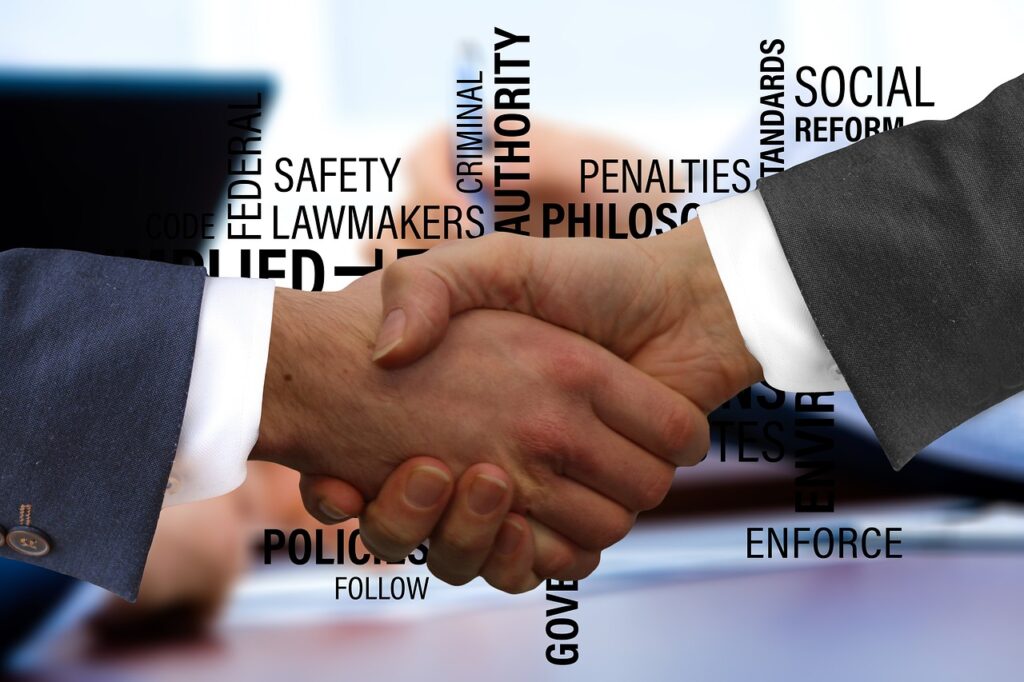
Financing is an essential component of any M&A process. which includes the following:
A cash loan to any company involves using the company's existing cash reserves to finance the acquisition. This option can be expensive. This may reduce the liquidity of the company.
This type of debt financing involves borrowing money from lenders or issuing bonds to finance acquisitions. The proposed option can be beneficial as, it can provide the required funds without depleting the cash reserves of the company. But it can also be risky because, it involves taking on additional debt.
Equity financing of a company involves issuing new shares of stock to finance an acquisition. The proposed option can be beneficial as it does not involve taking additional debt. However it can also dilute the stake owned by existing shareholders.
Hybrid financing of any company involves a combination of debt and equity financing.
The business world faces legal and regulatory challenges. Also, for any company it is necessary to comply with the legal and regulatory framework. The industry in which they operate.
Failure to execute the legal rules can lead to legal and financial consequences. This can be disastrous for the industry.
Here, we will cover five key legal and regulatory considerations that businesses need to be aware of which are firstly antitrust laws and regulations. secondly securities laws and regulations. thirdly tax laws and regulations. fourthly worker laws and regulations. And lastly intellectual property laws and regulations.
Anti-trust laws and rules are designed to promote fair and reasonable competition in the marketplace for each & every company. The main object and fundamental provision of anti-trust law or to prevent the formation of a monopoly in the business world today. A comp may harm consumers by raising prices or reducing the quality of products or services. Each & every company should be aware of antitrust laws and regulations in their jurisdictions. And owners must ensure before mergers and acquisitions that their business practices do not violate these laws. Mentioned Examples of antitrust violations affecting the business world include price fixing, bid rigging, and market allocation agreements.
Securities laws and regulations during mergers and acquisitions
Any corporate securities laws and regulations are designed to protect investors and promote transparency in the financial market. Companies issuing securities such as marketable stock or bond must comply with these laws and regulations. The company's failure to comply with the said corporate securities laws can result in legal and negative financial consequences. The Federal Securities laws and regulations governing any company cover a wide range of activities, including the issuance and sale of securities, disclosure requirements, insider trading, and market manipulation.
Federal tax law and regulation are designed to ensure that businesses pay the right amount of tax to the government. The company should follow the tax laws and regulations in their jurisdiction and not be exempt. A company should also accurately report their income and expenses. The Company's failure to comply with tax laws can result in legal and negative financial consequences, including fines and penalties. Federal tax law and regulation cover a wide range of the activities including income tax, sales tax and employment tax.
Any worker law and regulation are designed to protect workers' rights and promote fair labor practices. So companies must comply with labor laws and regulations in their jurisdiction. Also companies must ensure that their employment practices are fair and equitable. The company's failure to comply with worker law can result in legal and financial consequences, including fines and penalties. Any labor law and regulation cover a wide range of the activitiy’s including minimum wage requirements, overtime pay, and anti-discrimination law.
Any intellectual property law and regulation are designed to protect the right of the individual's and company who naturally create and develop original works. Types of the intellectual property can be including invention, trademark, copyright and trade secrets. So every company must comply with the intellectual property law and regulation in their jurisdiction. They should also ensure that their business practices do not infringe the intellectual property right of the others property . The company's failure to comply with intellectual property laws may result in legal and negative financial consequences. Courts can order damages and injunctions for breach of law.
Mergers and acquisitions companies (M&A) of companies are becoming increasingly common. Different types of company transactions can bring great benefits such as access to new markets, increased efficiency and improved economies of scale. They can also be challenging to implement. Integration is an essential process after the merger of companies. which can determine the success or failure of the merger of the merging companies. Here I will share with you the most effective post-merger integration strategies for cultural integration, organizational restructuring, realizing synergies, talent management and change management.
Mergers and acquisitions companies. One of the most important aspects of any post-merger integration is cultural integration when two companies merge. As such they bring together different cultures, values and ways of working. Thus failure to address these differences can lead to conflicts, misunderstandings and resistance to change. Any company should do the following to ensure successful cultural integration.
Defining the culture of any new company and communicating it effectively to employees is critical. Also the company's culture should be aligned with the company's vision and values.
Identify the cultural differences between the two merging companies. And find ways to address them. This can include training, mentoring and team-building exercises.
Consensually create an inclusive environment that values diversity and promotes collaboration. Encourage company employees to share their thoughts and opinions. And be open to their feedback.
Mergers and acquisitions companies. Another important aspect of post-merger integration is any organizational restructuring. Merging any two companies can lead to redundant positions, overlapping responsibilities, and conflicting reporting structures. To streamline the organization and ensure a smooth transition to such companies, companies should:
Analyze the current organizational structure of both the merging companies and identify redundancies, overlaps and gaps.
Mergers and acquisitions companies. Develop a new organizational structure of the company that is aligned with the company's goals and objectives. Doing so may involve creating new positions, merging departments, and redefining job roles.
Communicate the new company structure: Communicate the new organizational structure to old and new employees. This includes changes in reporting structure, job roles and responsibilities.
The primary objective of merger of companies is to realize synergies. Refers to the combined benefits of the merged companies, which are greater than the sum of their individual parts. To achieve company synergy, companies should immediately:
As an owner identifies areas where the two companies can create synergies. Examples include shared resources, complementary products, and expanded market access.
You develop a detailed plan to achieve synergy. Thus you have to include specific objectives, timelines and performance metrics.
Implement a plan designed for synergy, and monitor your progress and adjust course as needed.
Mergers and acquisitions companies. Talent management is another essential aspect of post-merger integration for every company. Retaining top talent is critical for a company to maintain continuity and achieve long-term success. To effectively manage talent, companies should:
Assess employee talent: Assess the employee talent of both companies before the merger and identify key and useful employees whom you should retain.
Develop a company retention plan: As an owner, develop a retention plan. This includes incentives and career development opportunities for key employees.
Communicate the prepared plan: Communicate the retention plan to key employees, emphasizing the benefits of staying with the new company after the merger.
Change management is important to ensure a smooth transition and reduce resistance to change. To effectively manage company change, companies must:
Implement the changes: Communicate the changes resulting from the merger to any employees, customers and other stakeholders.
Provide them with support: Provide support to employees affected by the changes, including training, coaching and counseling any employees.
Mergers and acquisitions companies. Mergers and acquisitions can be a strategic way for companies to grow their business and gain competitive advantages. To this end they can also present significant challenges and risks. which must be managed carefully. We share with you the top five challenges and risks in M&A (Mergers and acquisitions companies). These include integration challenges, culture clash, operational disruption, financial risk, and legal and regulatory risks.
Company integration is often the most challenging aspect of M&A(Mergers and acquisitions companies). While companies must seamlessly connect their operations, systems and cultures to achieve the desired synergies and cost savings. Achieving integration is now easier said than done. But all stakeholders are connected and working towards common goals. It requires considerable planning, coordination and communication to ensure this.
Integration challenges can arise due to differences in a company's corporate culture, technology systems, business processes, and employee morale. Such integration requires careful planning. And companies should establish clear goals, targets and timelines to ensure a smooth transition. It is also essential to have a dedicated team responsible for overseeing the integration process.
Culture clash is another significant challenge in Mergers and acquisitions companies. And companies with different cultures can struggle to work together effectively. Which leads to conflict, low morale and poor performance. Company cultural differences arise from differences in management styles, communication patterns, values, and work ethics.
Companies should identify their cultural values to overcome such cultural differences. They should be aligned with their merger and acquisition partners. This requires open and honest communication and a willingness to compromise on certain issues. And it is also important to establish a culture of trust, respect and collaboration to create a positive work environment for all employees.
Mergers and acquisitions can cause significant operational disruption. This leads to reduced productivity, increased costs and reduced customer satisfaction. Operational disruptions can arise due to changes in m & A business processes, technology systems and employee turnover.
To minimize your operational disruptions, companies should carefully plan the integration process and communicate with all stakeholders. This includes identifying critical business processes, developing a detailed integration plan, and establishing clear lines of communication. Any companies should also provide adequate training and support to the employees so that they can adapt to the changes.
Mergers and acquisitions companies can also present significant financial risks. These include increased debt, reduced profitability and reduced shareholder value. Thus financial risks can arise from overpaying for acquisitions, mismanaging the integration process and failing to achieve desired synergies.
Companies must conduct thorough due diligence and valuation analysis before pursuing M&A (Mergers and acquisitions companies) to minimize financial risks in mergers and acquisitions. And they should also develop a detailed integration plan with clear financial goals and milestones. It is also important to establish a risk management strategy to identify and mitigate potential financial risks.
Mergers and acquisitions companies can present significant legal and regulatory risks, including antitrust violations, breach of contract and intellectual property disputes. Also legal and regulatory risks may arise due to differences in national and international laws, regulations and standards. Companies should conduct thorough due diligence and legal analysis before pursuing M&A to minimize legal and regulatory risks in mergers and acquisitions. And they must also establish clear guidelines and procedures for compliance with legal and regulatory requirements. It is also important to engage with legal and regulatory experts to ensure that each company is in full compliance with all applicable laws and regulations.
A. Disney and pixar
B. Facbook and instagram
C. ExxonMobil and XTO Energy
D. Amazon and whole foods market

https://www.upcounsel.com/mergers-and-acquisitions-law
1. Corporate mergers
2. Business Acquisitions
3. Merger agreement
4. Takeovers
5. Legal mergers
As per the foundations of the Bar Council of Bharat (India), Advocate Viren.S.Dave isn't permissible to solicit work and advertise. By clicking the “Agree” button and accessing this web site (www.asklbylaw.com) the user absolutely accepts that you just Maineasure seeking info of your own accord and volition which no kind of solicitation has taken place by me.The info provided below this web site is exclusively accessible at your request for information functions solely. It mustn't be understood as soliciting or advert. Advocate Viren.S.Dave isn't accountable for any consequence of any action taken by the user hoping on material / info provided below this web site. In cases wherever the user has any legal problems, he/she altogether cases should obtain freelance legal recommendation.